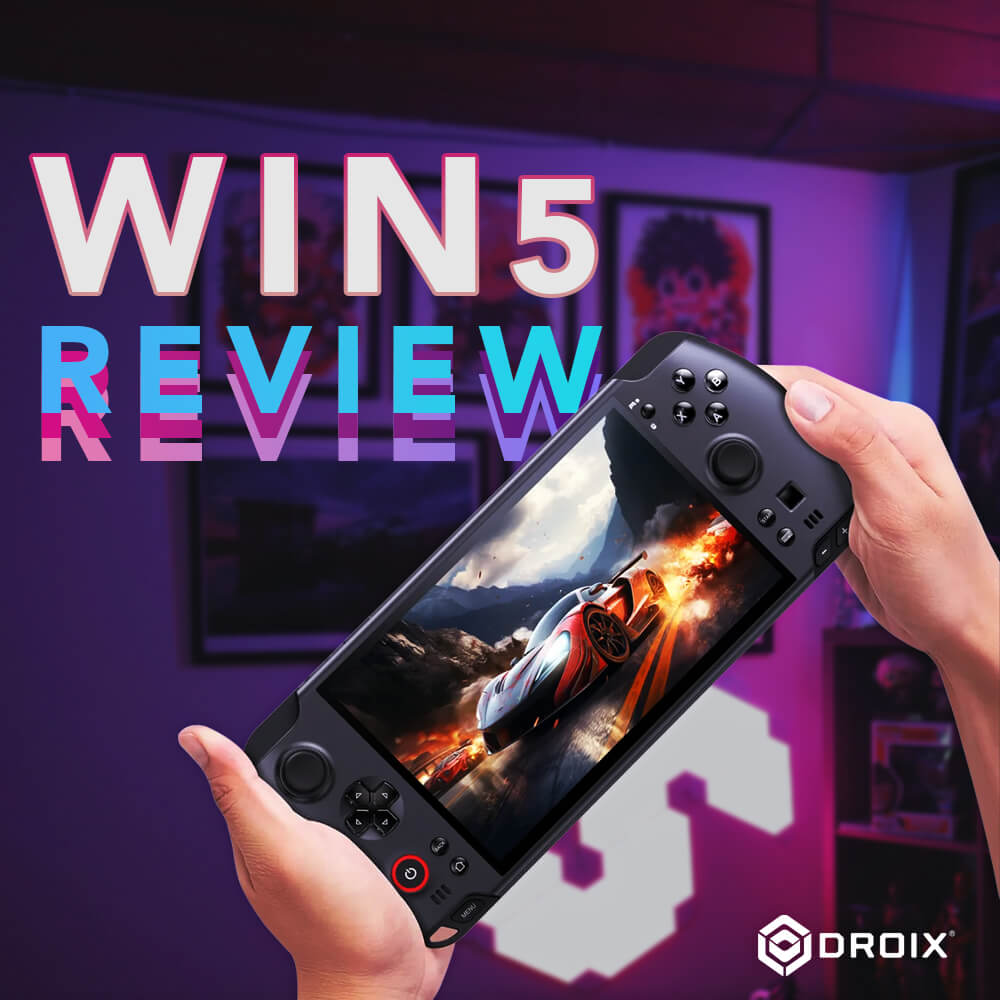
GPD WIN 5 Review: The Ultimate Portable Gaming PC
Imagine harnessing the force of a full-fledged desktop gaming rig within a device that fits in your hands. That is the promise of the GPD WIN 5, a revolutionary handheld gaming PC. Equipped with AMD’s cutting-edge Ryzen AI MAX+ 395 processor and an innovative external battery, the WIN 5 makes some significant claims. In our comprehensive GPD WIN 5 review, we will rigorously test this device to determine if it truly sets the new standard for handheld gaming.
GPD WIN 5 Review Video
GPD WIN 5 Overview
Let’s begin with the physical characteristics. The GPD WIN 5 comes in at dimensions of roughly 10.5 x 4.3 x 0.95 inches (26.7 x 11.1 x 2.4 cm) with a weight of about 565g (1.24 lbs). Its companion external battery pack is sized at 4.36 x 4.34 x 0.71 inches (11.07 x 11.03 x 1.81 cm) and adds around 350g (0.77 lbs) of weight, creating a flexible portable gaming PC.
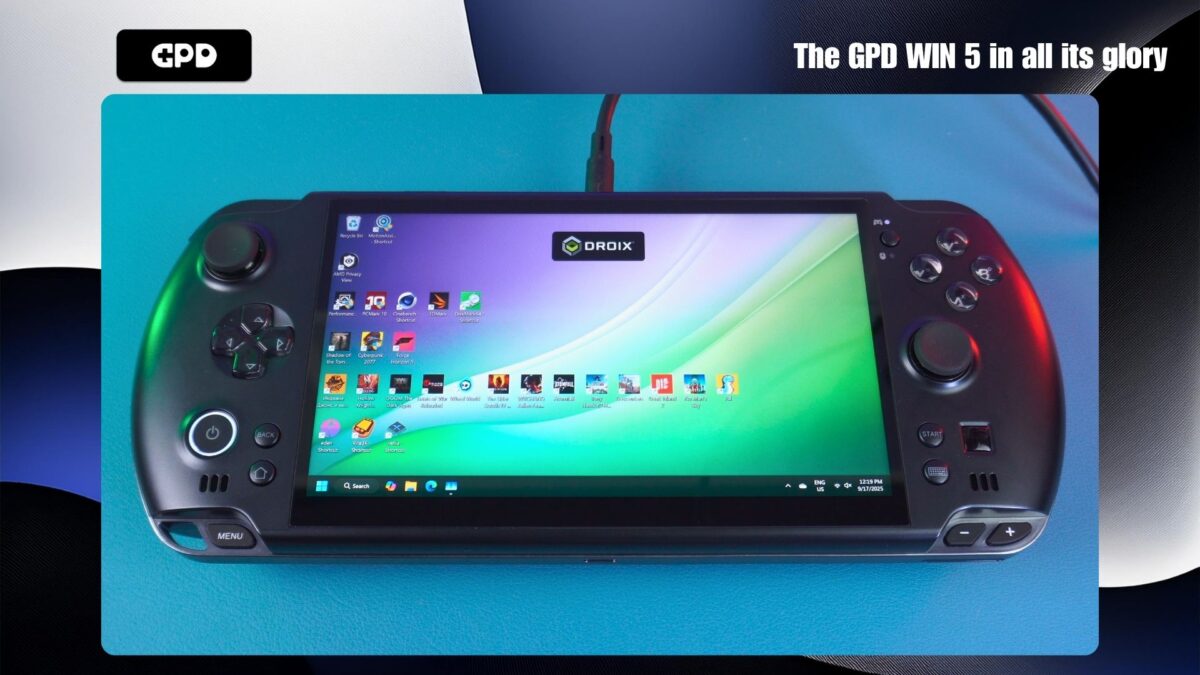
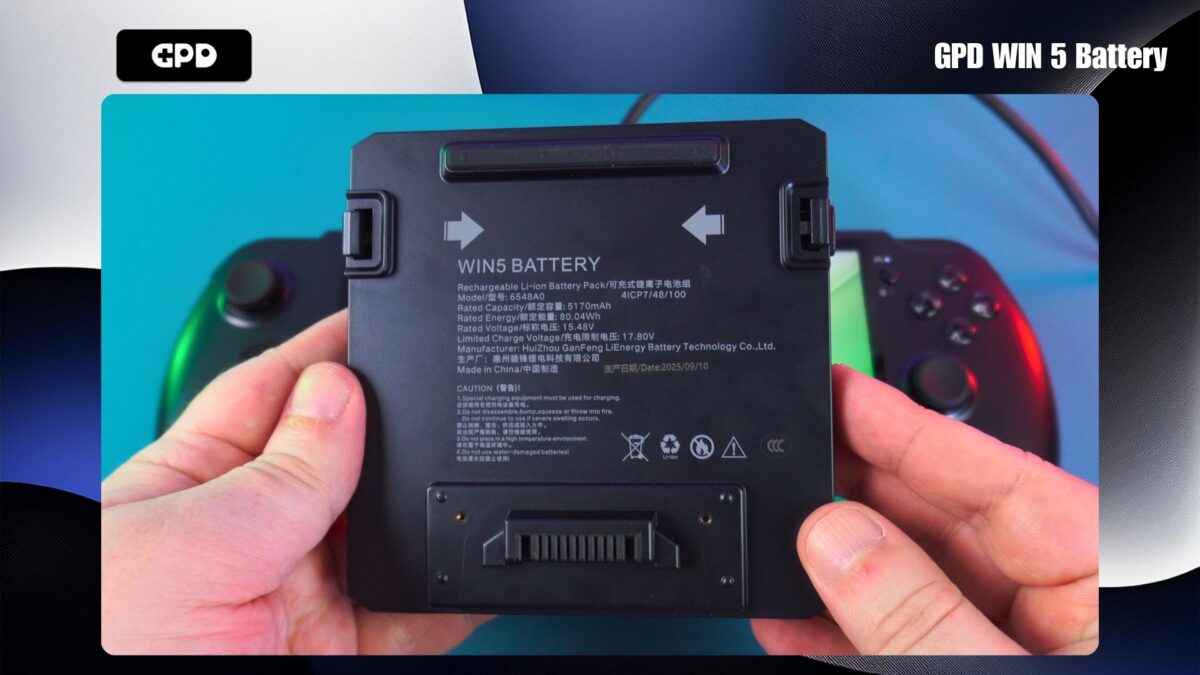
The front of the unit is dominated by a stunning 7-inch touchscreen featuring a crisp 1920×1080 resolution. A major focus of this GPD WIN 5 review is its 120Hz refresh rate, complete with AMD FreeSYNC Premium support. This is a significant improvement over the 6-inch, 60Hz panel on the Win 4.
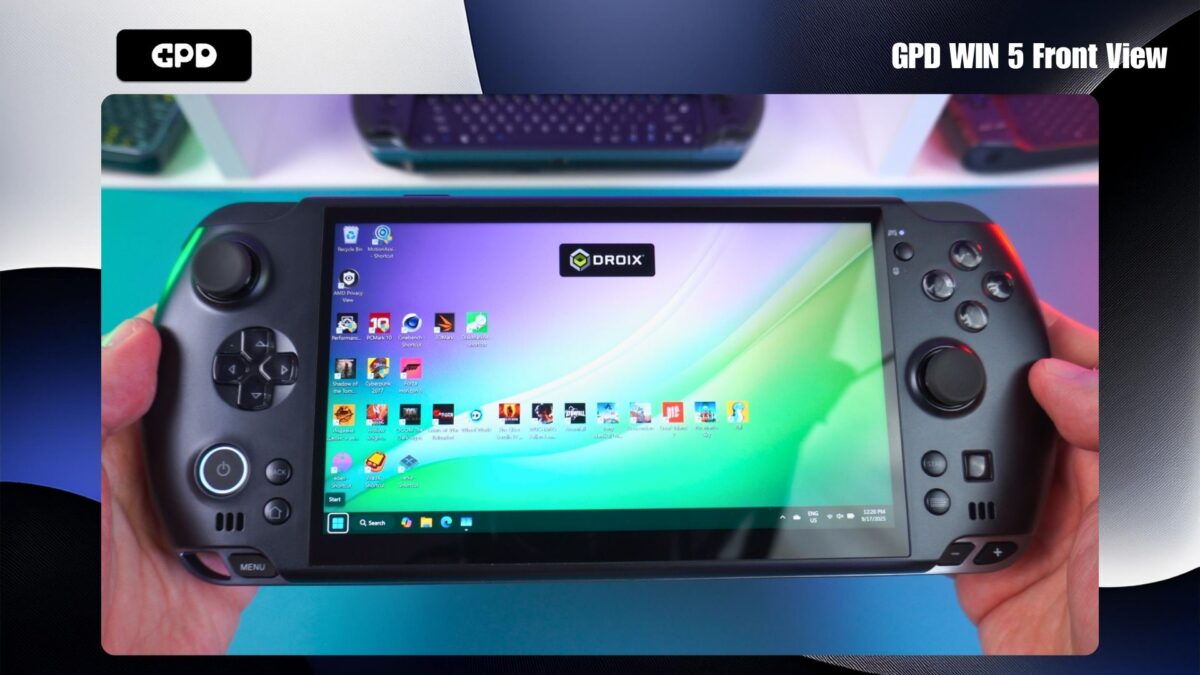
For inputs, you will find dual capacitive analog sticks, a D-Pad, and standard gaming buttons on the sides. A dedicated button near the top right switches between gamepad and mouse modes. The bottom left area contains the power button, which doubles as a fingerprint sensor, alongside a Back button and an Active Window/Desktop button. The bottom right corner holds a Start button, a virtual keyboard button, and a useful optical finger mouse. Finally, a Menu button and volume controls are situated along the very bottom.
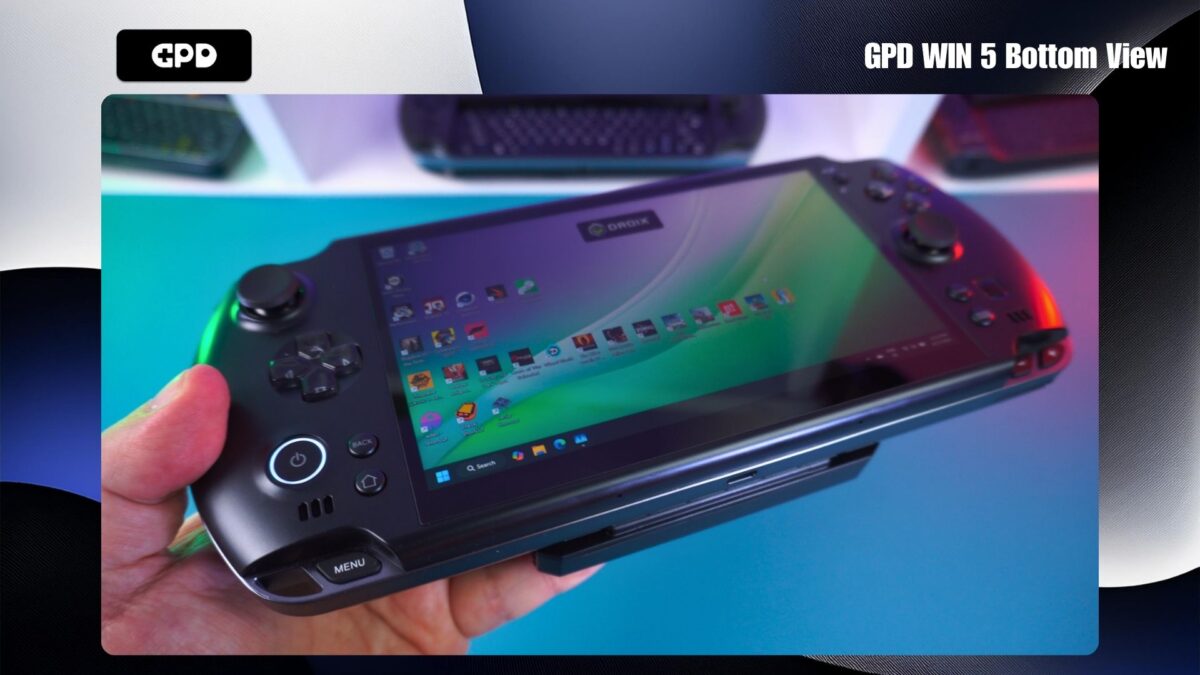
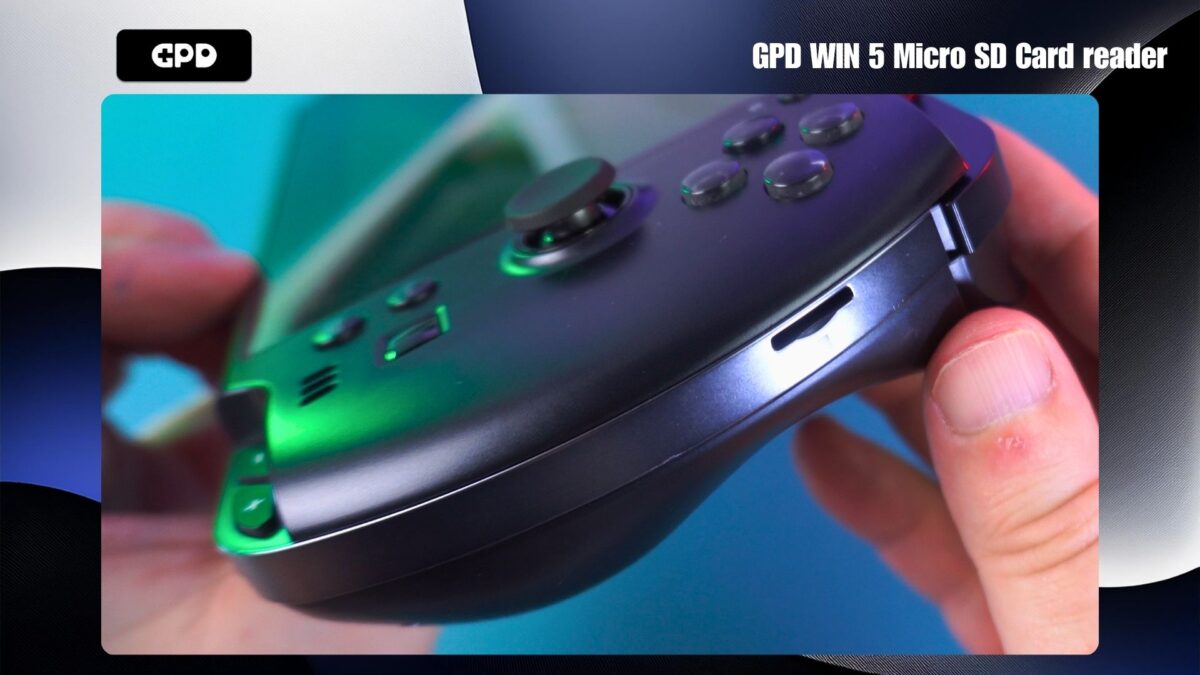
Examining the I/O, the bottom of this compact gaming PC includes a USB 3.2 Gen 2 Type-C port and the new Mini SSD Slot, which will be discussed shortly. The right side has a Micro SD card reader slot.
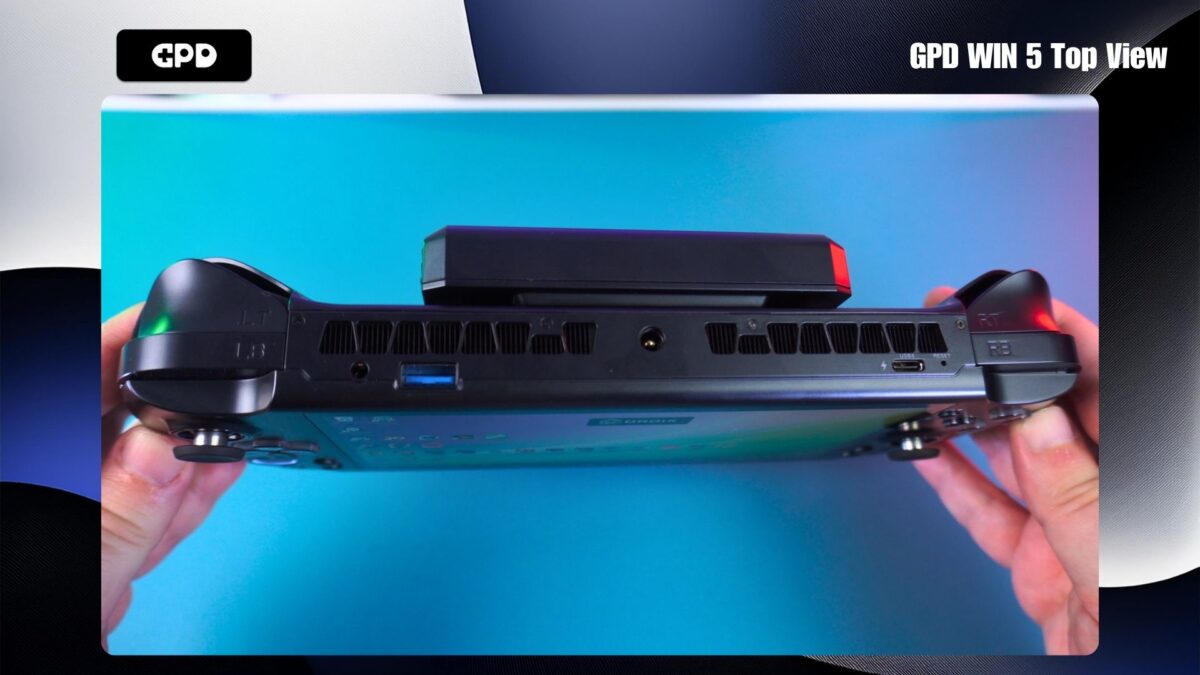
The top edge is populated with left and right analog triggers and shoulder buttons, a 3.5mm audio jack, a DC barrel jack capable of handling 180W of power, and another USB 3.2 Gen 2 port.
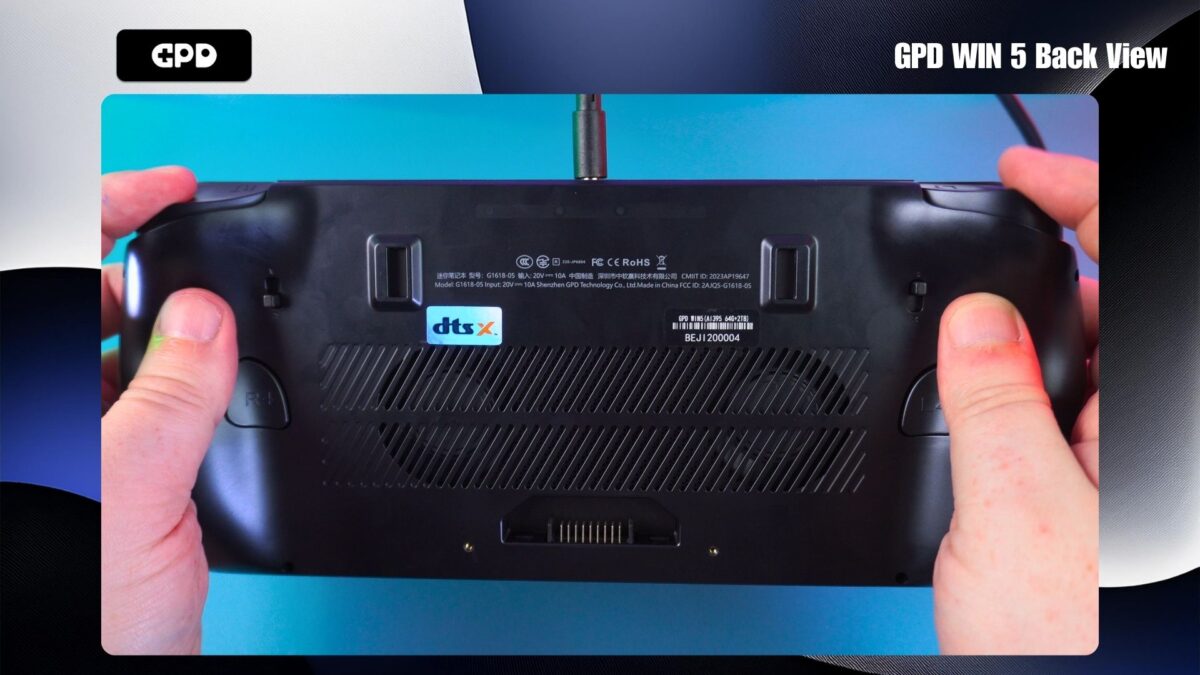
On the rear of the device, two small switches allow you to toggle the analogue triggers between an analogue input style and a digital switch style, perfect for racing titles and FPS games respectively.
Battery Connectivity on the GPD WIN 5
The back also features two latching points for the external battery, which connects via a central connector. Attaching the battery is a straightforward process: simply depress the two buttons on its sides, align it with the back of the handheld, and release the buttons to lock it in place.
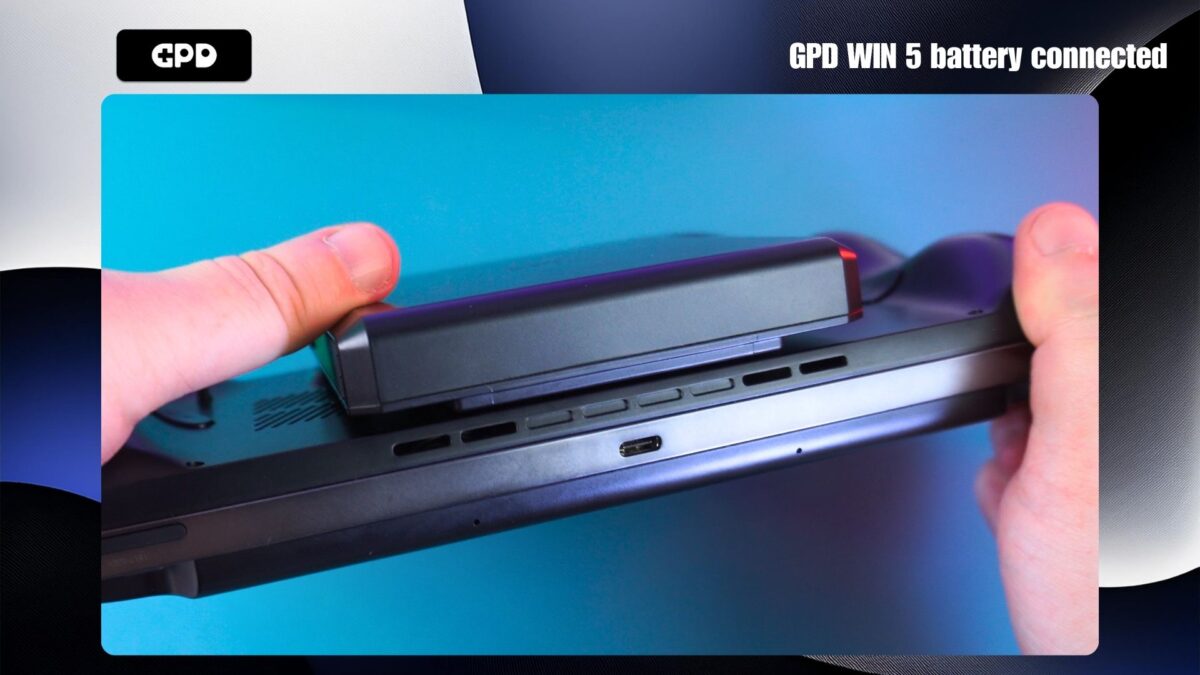
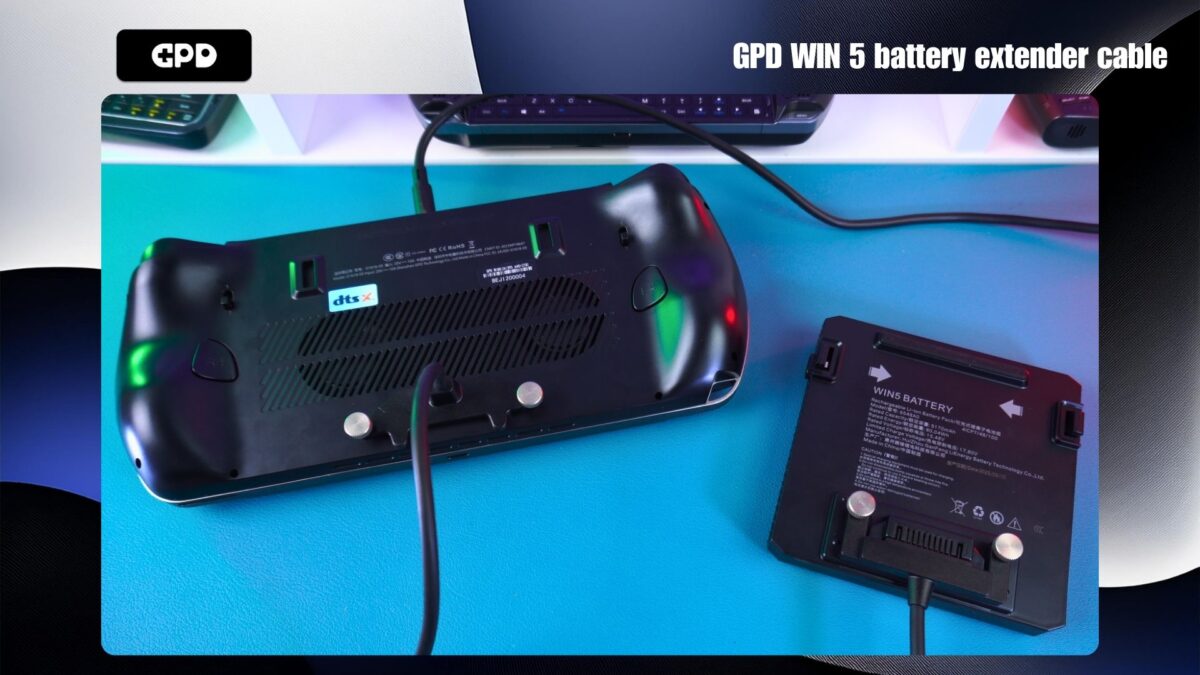
Furthermore, a connection cable is also provided, allowing you to use the battery remotely to lessen the handheld’s weight. This cable fastens securely with two screws on each end, preventing any unintentional disconnections during gameplay.
GPD WIN 4 VS GPD WIN 5
For those who own a GPD WIN 4, or are just curious about how the two models compare, here is a concise overview of the key distinctions.
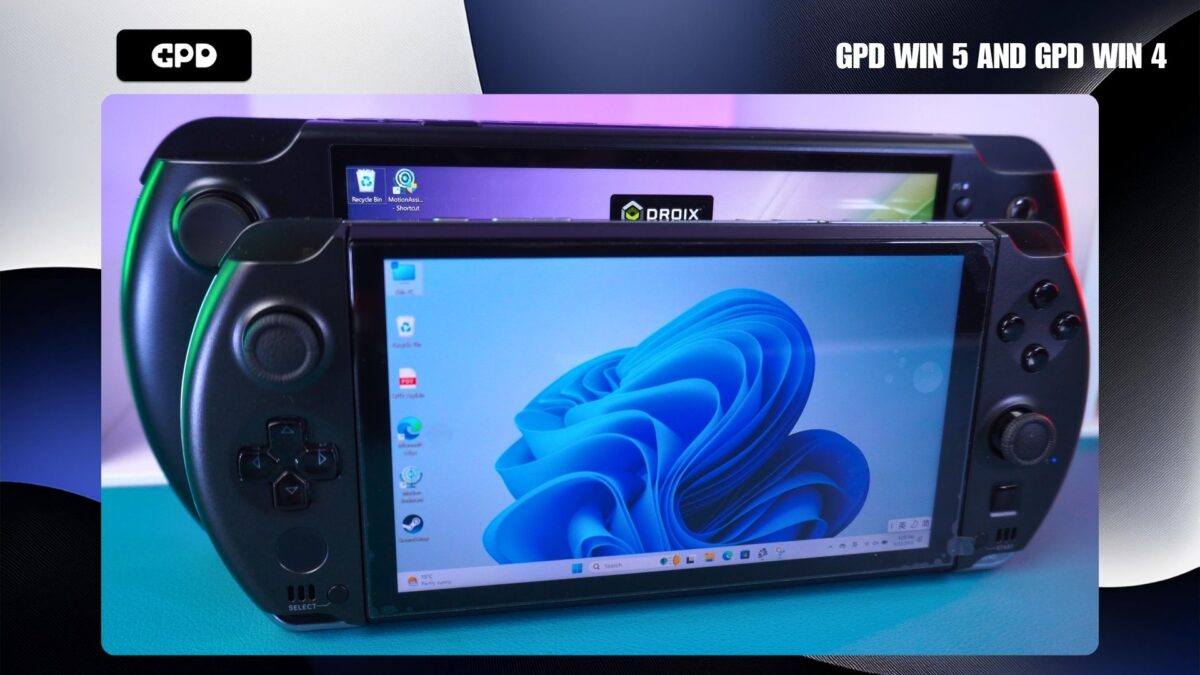
In terms of physical size, the GPD WIN 4 2025 is more compact, with dimensions of approximately 8.6 x 3.6 x 1.1 inches (22.0 x 9.2 x 2.8 cm), making it the more pocket-friendly of the two devices. As previously noted, the screen on the WIN 5 represents a substantial improvement, moving from the original 6-inch 60Hz panel to a new 7-inch display that supports a far more visually pleasing 120Hz refresh rate.
Increasing the screen size further to 8 inches would naturally enlarge the handheld’s overall footprint. It seems this size category is already well-addressed within GPD’s existing product range, which includes the current 7-inch GPD WIN Mini 2025 and the 10.1-inch GPD WIN MAX 2 2025. It is anticipated that these models will also see future revisions and possibly a slightly larger WIN Mini model in particular.
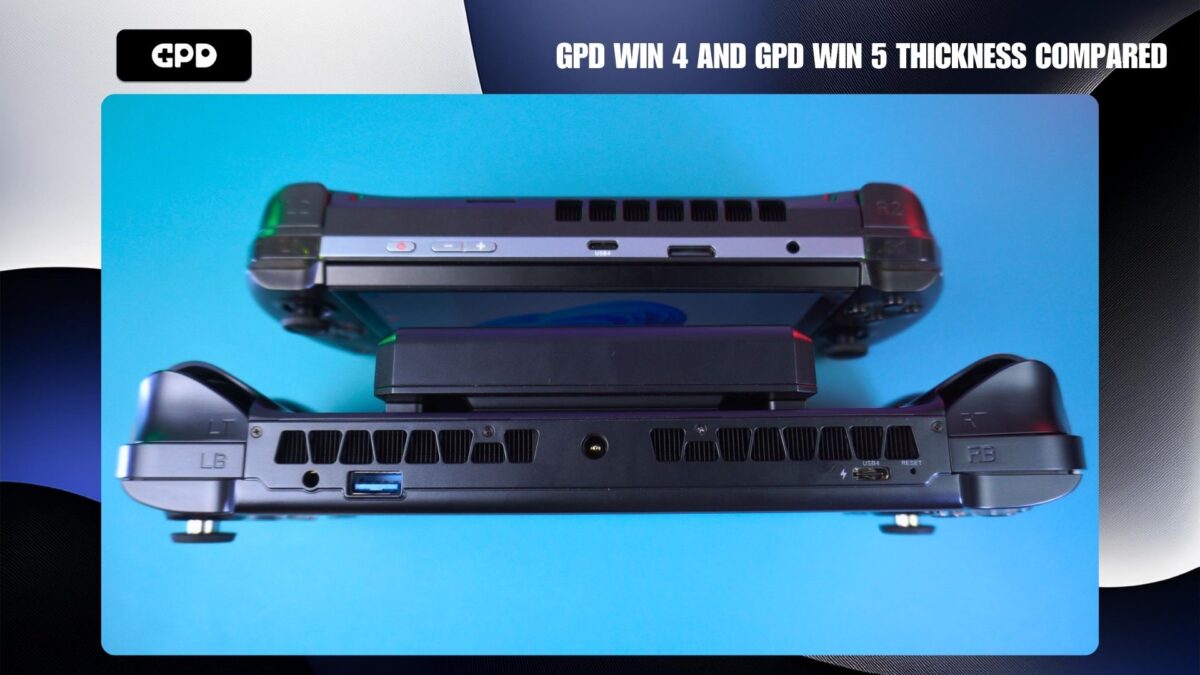
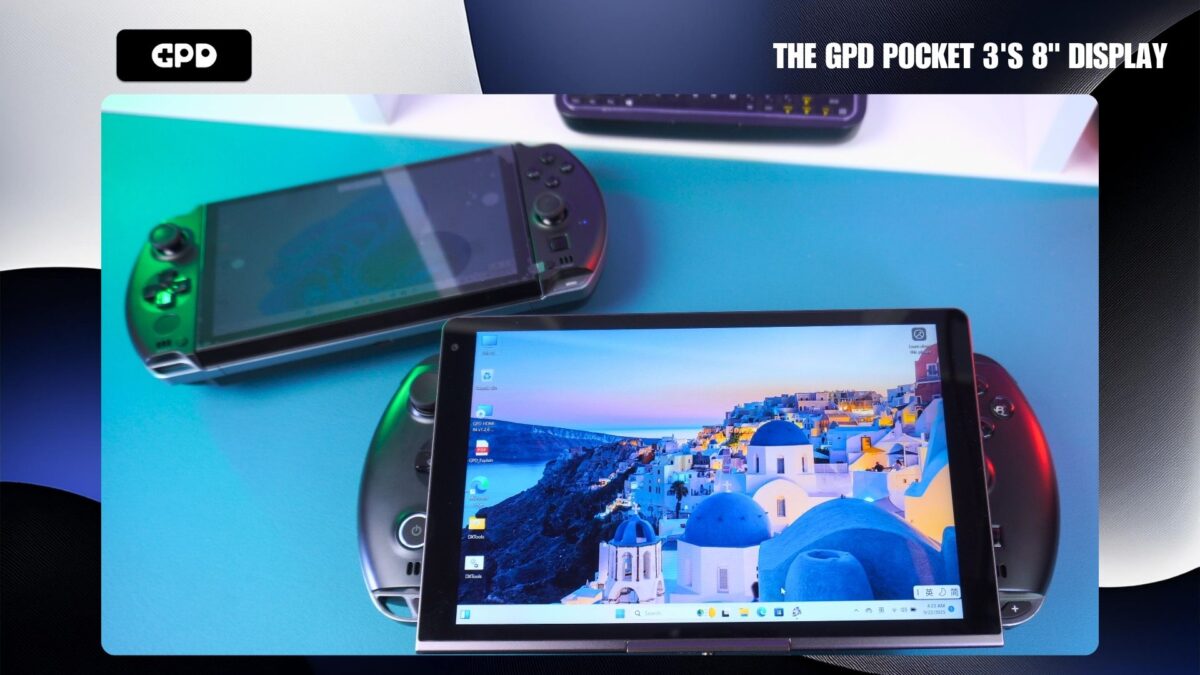
A significant departure from tradition is the omission of the physical keyboard. Historically, a keyboard has been a defining feature of the GPD WIN series, and the WIN 5 marks the first model to forgo it. The reason for this could be a strategic design decision by GPD or a potential constraint imposed by the new display or overall dimensions.
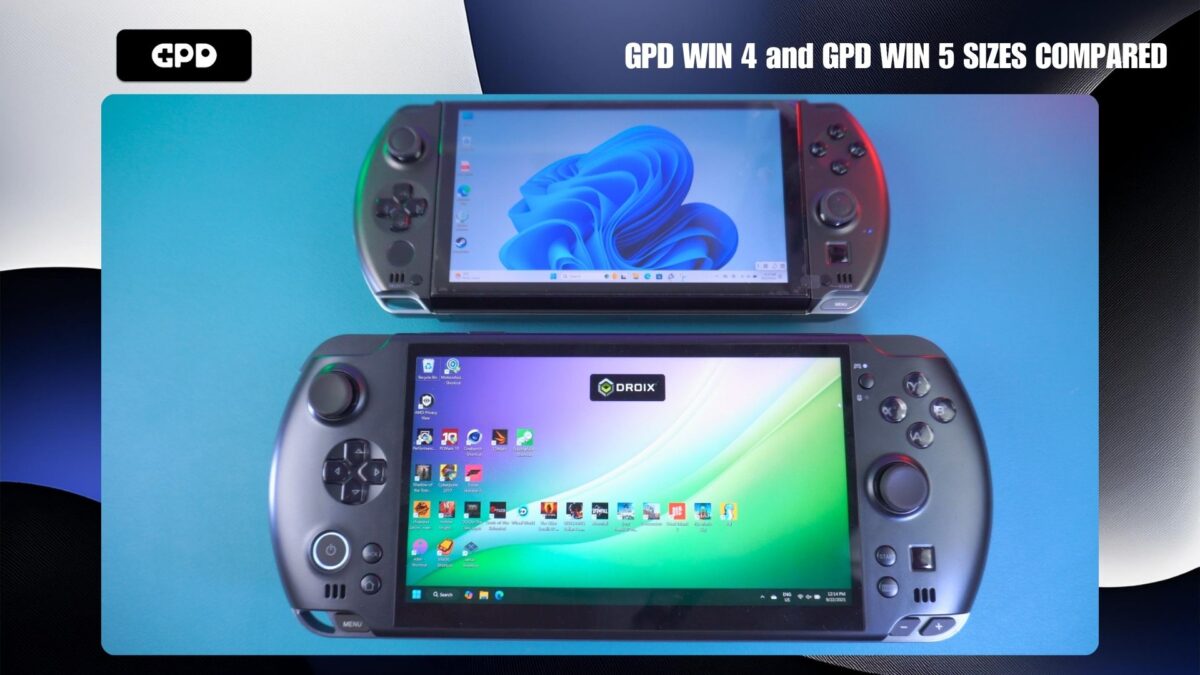
Internally, the hardware sees some of the most substantial updates. The device is equipped with a new-generation processor, an advancement from the AMD Ryzen AI 9 HX 370 & Radeon 890M, with performance comparisons to follow later in this review. To manage thermal output, a dual-fan cooling system is integrated. Additionally, the new power configurations, which will be detailed next, are a key feature. For further information, including in-depth benchmarks on the previous model, you can view our GPD WIN 4 2025 review here.
Powering the GPD WIN 5
There are a few methods for powering this versatile handheld gaming computer. The primary method is the included 180W power brick, which connects to the DC barrel jack on top. For stationary gaming near an outlet, this option delivers maximum performance.
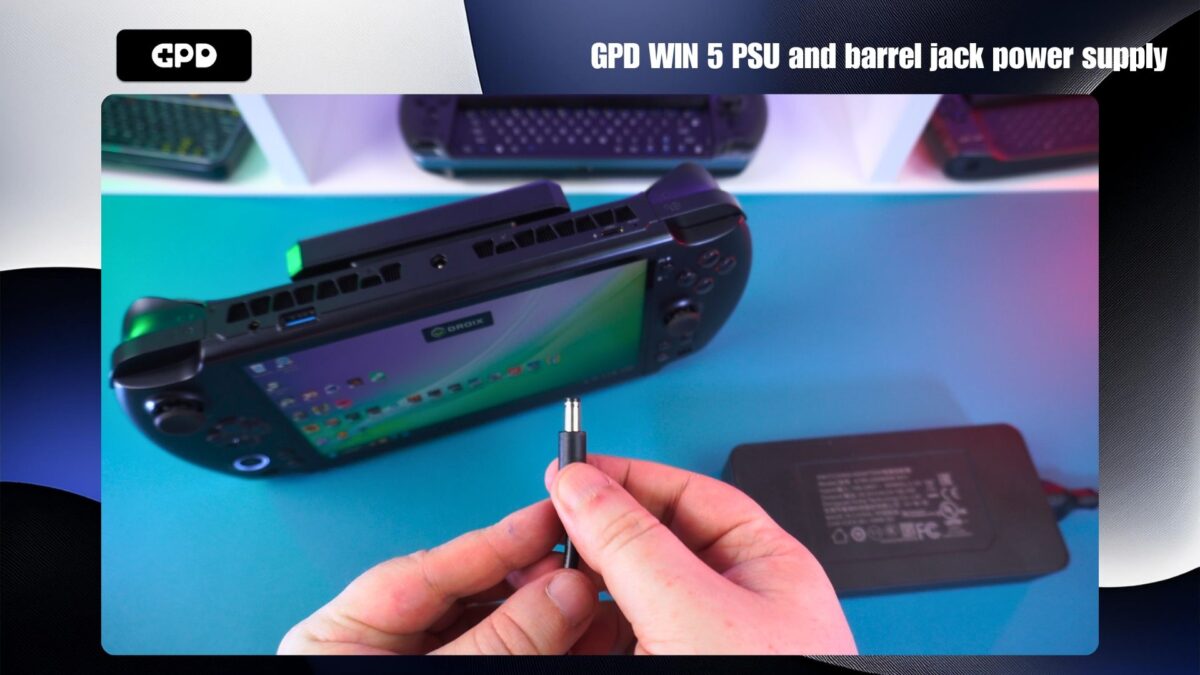
Alternatively, the device can be powered through its USB-C port using a compatible charger or a power bank, though power will be limited by the source’s output.
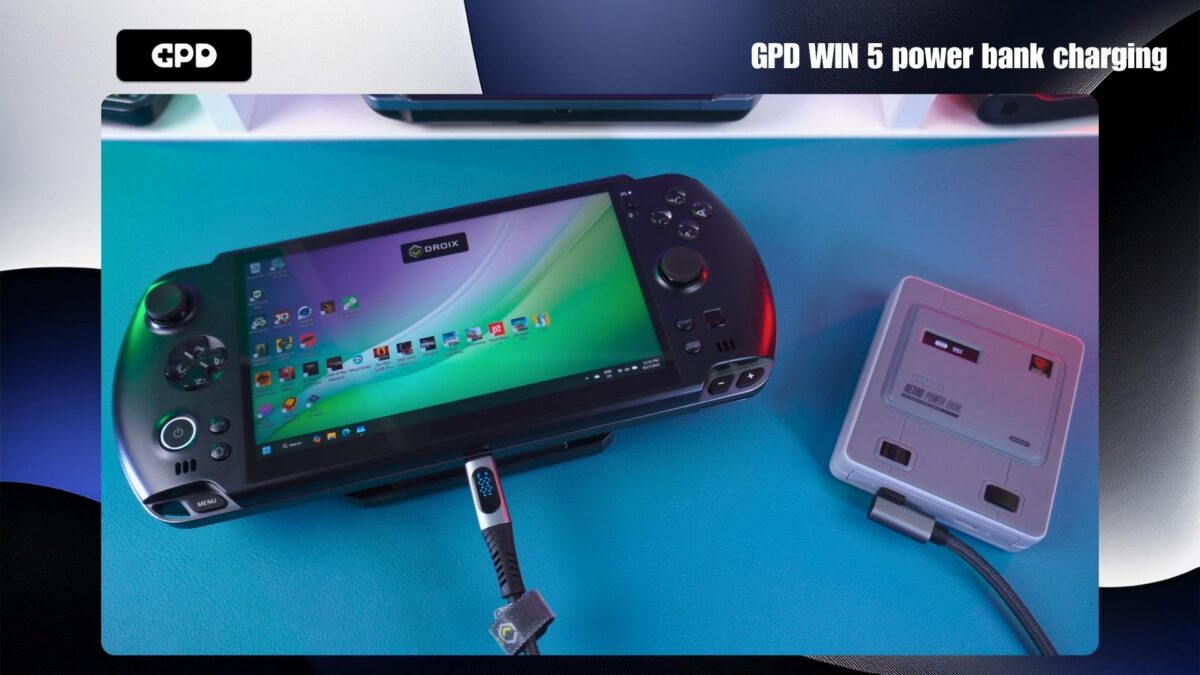
And then there is the external battery. Our battery testing is an essential component of this GPD WIN 5 review. When pushed to its maximum 80W TDP (UPDATE: It will support up to 85W TDP at launch) at full brightness while looping Cinebench 2024, the battery lasted for approximately 42 minutes. In a more relaxed scenario, sitting idle on the desktop at 55W TDP and 50% brightness, it provided around 10 hours of runtime. Average usage will vary depending mainly on the TDP, but for an average game without pushing everything to the maximum, lets say two to three hours.
GPD WIN 5 Technical Specifications
This is where our GPD WIN 5 review becomes truly compelling. The internal components are, to put it mildly, astounding for a handheld machine.
| CPU | AMD RYZEN AI MAX+ 395, 16-Core ZEN 5, XDNA 2 Architecture (126 TOPS) AMD RYZEN AI MAX 385, 8-Core , 16-Threads, ZEN 5, Up to 5 GHz, 106 TOPS |
| GPU | AMD Radeon 8060S (Integrated), RDNA 3.5, 40 CUs (2560 Stream Processors), 2.9 GHz, AMD FreeSync Premium, FSR 3.1 AMD Radeon 8050S (Integrated), 32CUs, 2.8 GHz, AMD FreeSync Premium, |
| RAM | 32GB, 64GB, 128GB LPDDR5x Unified Memory, 8000 MT/s |
| STORAGE | 1 TB / 2 TB / 4 TB M.2 NVMe Slot (2280) PCIe Gen4, Single-sided SSD 1x Mini SSD Card slot PCIe Gen4 x1 1x Micro SD card slot SD 3.0 Protocol |
| DISPLAY | 7-inch, 120Hz, 16:9, Native Landscape Gaming Screen, AMD FreeSync Premium, 100% sRGB, 315 PPI, 500 NITS |
| CONTROLS | Capacitive Joystick (Esports FPS grade, zero dead zone, zero drift) Hall Effect Triggers (Dual-mode long/short thread, 0.1mm accuracy, <0.1ms response) |
| POWER & BATTERY | 80Wh External Removable Lithium-Ion GPD FlexPower (Dual-mode: backpack-mounted or cable-free) 180W DC Power Adapter (AI PC-specific) |
| DIMENSIONS | GPD WIN 5 handheld: 10.5 x 4.3 x 0.95 inches (26.7 x 11.1 x 2.4 cm) GPD WIN 5 battery: 4.36 x 4.34 x 0.71 inches (11.07 x 11.03 x 1.81 cm) |
| WEIGHT | GPD WIN 5 handheld: 565g (1.24 lbs) GPD WIN 5 battery: 350g (0.77 lbs) |
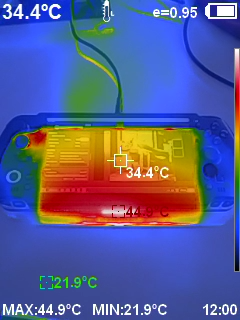
As noted, battery life was covered earlier. During our thermal and acoustic tests running alongside the battery benchmarks, the highest recorded fan noise was 67 dB, and the peak temperature was 48°C without the battery attached. We observed negligible differences with the battery connected, which was reassuring.
Mini SSD Overview
GPD continues to innovate with the GPD WIN 5, being the first device to feature the new BIWIN Mini SSD storage standard. This new format is barely larger than a microSD card, measuring just 15 x 17 x 1.4 mm, yet it can offer up to 2TB of storage.
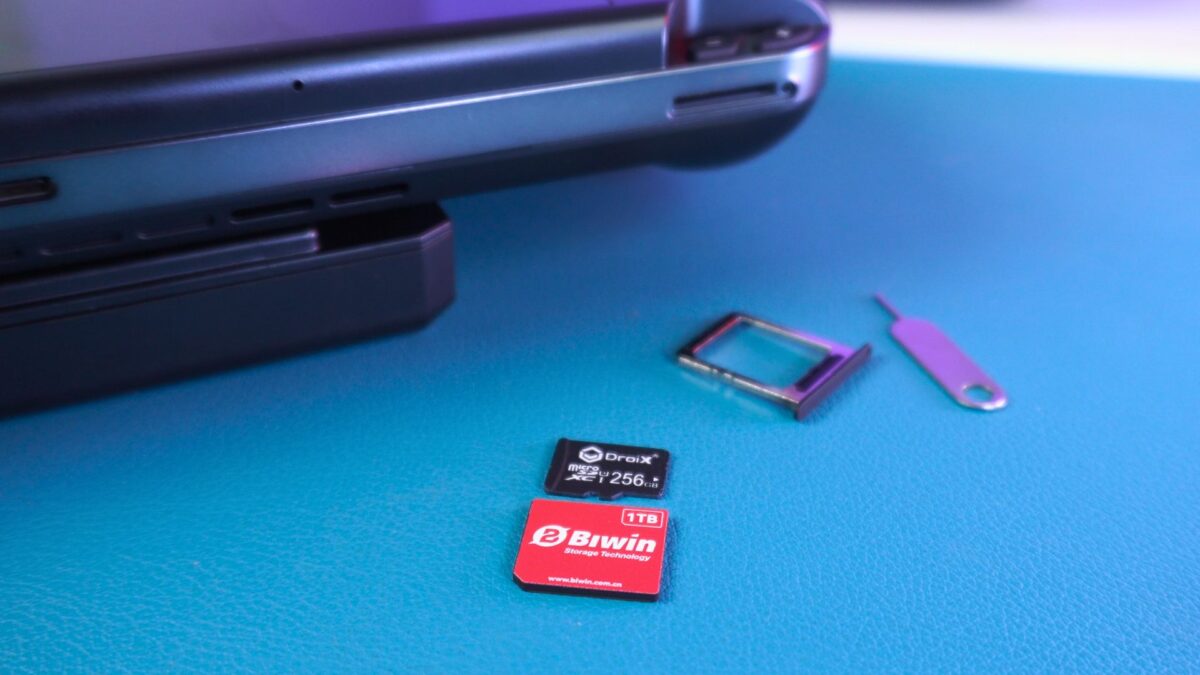
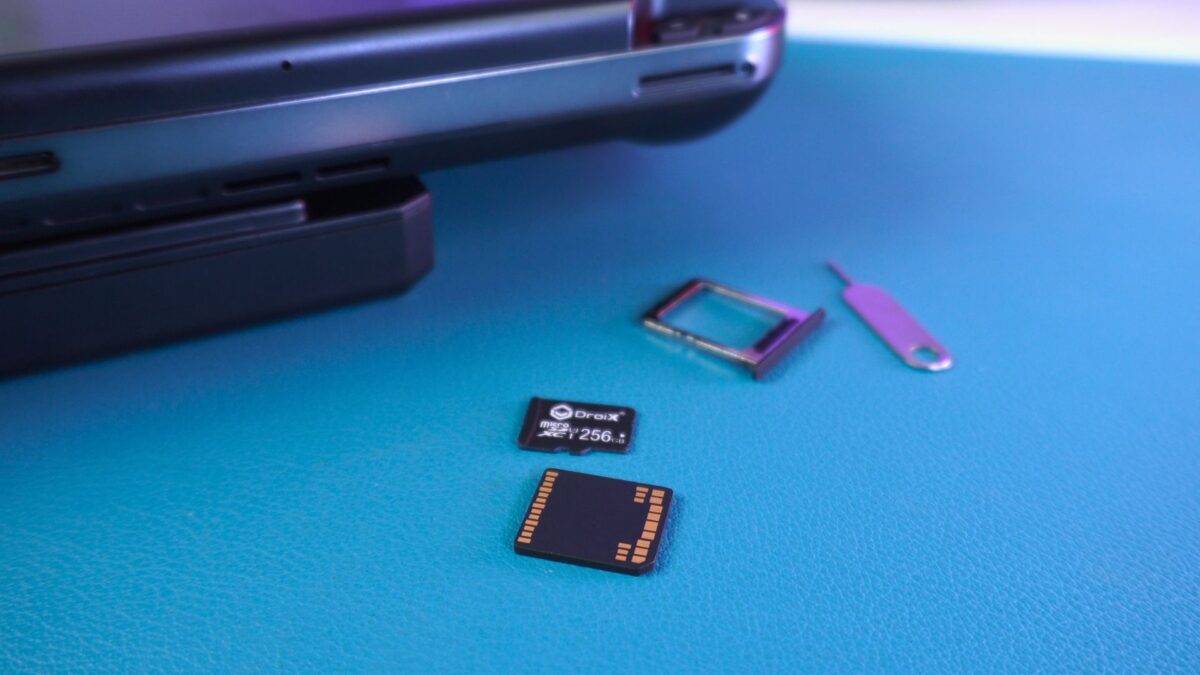
Our speed tests using CrystalDiskMark yielded positive results. It’s important to note that the WIN 5 utilizes a 4×1 mini PCIe interface, not the full 4×2 specification for mini SSDs. As such, we recorded read and write speeds of about 1,700Mb/s.
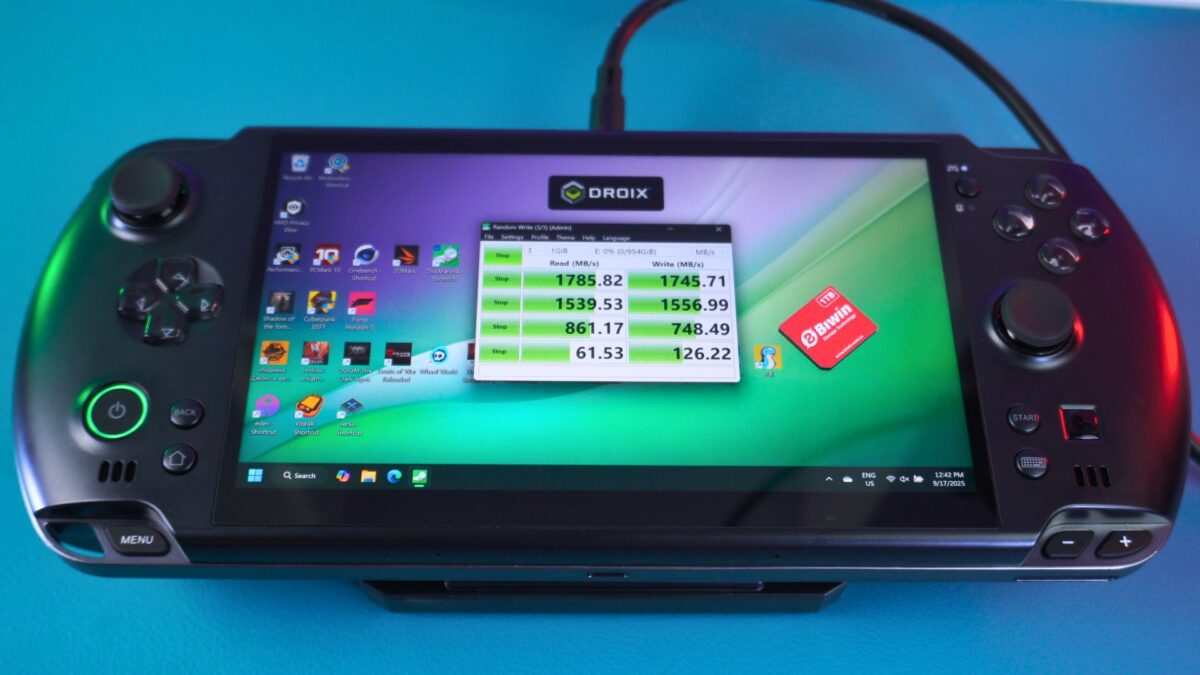
A full 4×2 interface would achieve speeds over 3,700 Mb/s, so we are seeing about half of the format’s maximum potential. Still, this is a remarkable speed and a massive leap from the ~100Mb/s offered by typical Micro SD cards.
System Benchmarks
Now, we move to the system benchmarks portion of our GPD WIN 5 review. These tests were run at the stock 55W TDP, with comparisons made to previous WIN 4 models at their 28W TDP where applicable. Please remember this is a pre-production unit, so final performance may vary slightly.
Cinebench 2024
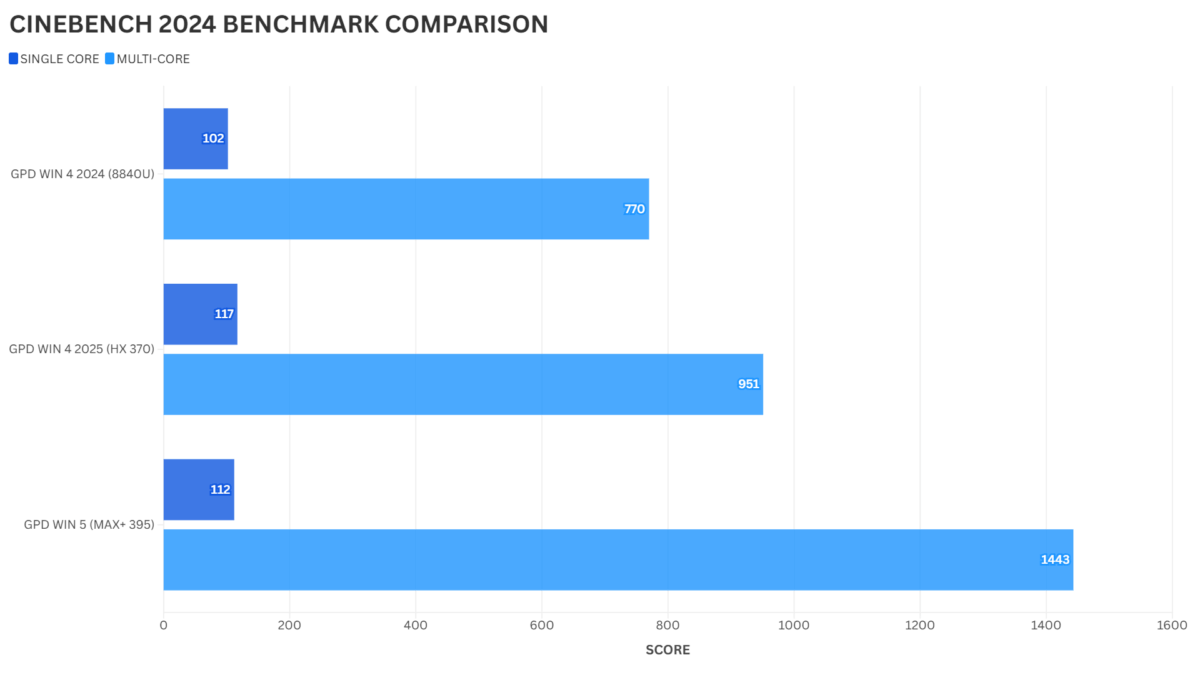
This test measures the CPU’s single and multi-core rendering capabilities. We observed that the single-core score was unexpectedly slightly behind the HX370. In contrast, the multi-core performance showed an enormous 51% improvement.
Geekbench 6
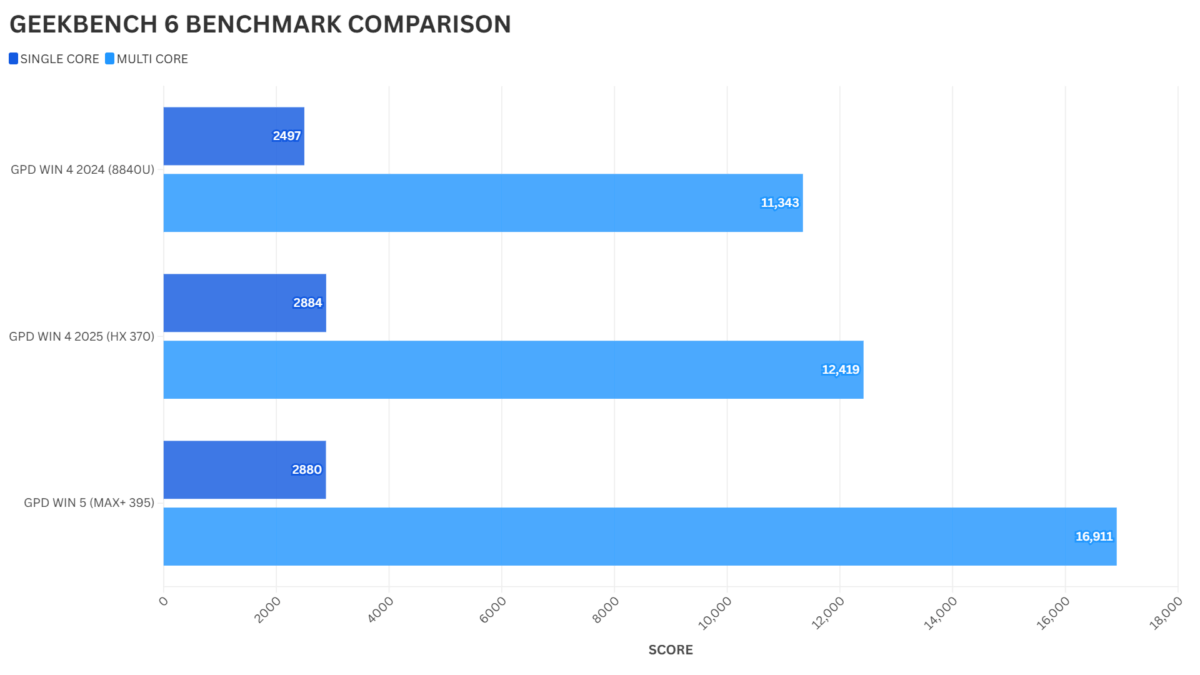
This benchmark also evaluates single and multi-core CPU performance. The results mirrored Cinebench, with single-core scores being statistically similar to the HX 370, but multi-core performance showing a substantial 36% uplift. The TDP can be raised to 80W in both tests to achieve higher single-core figures.
PCMark
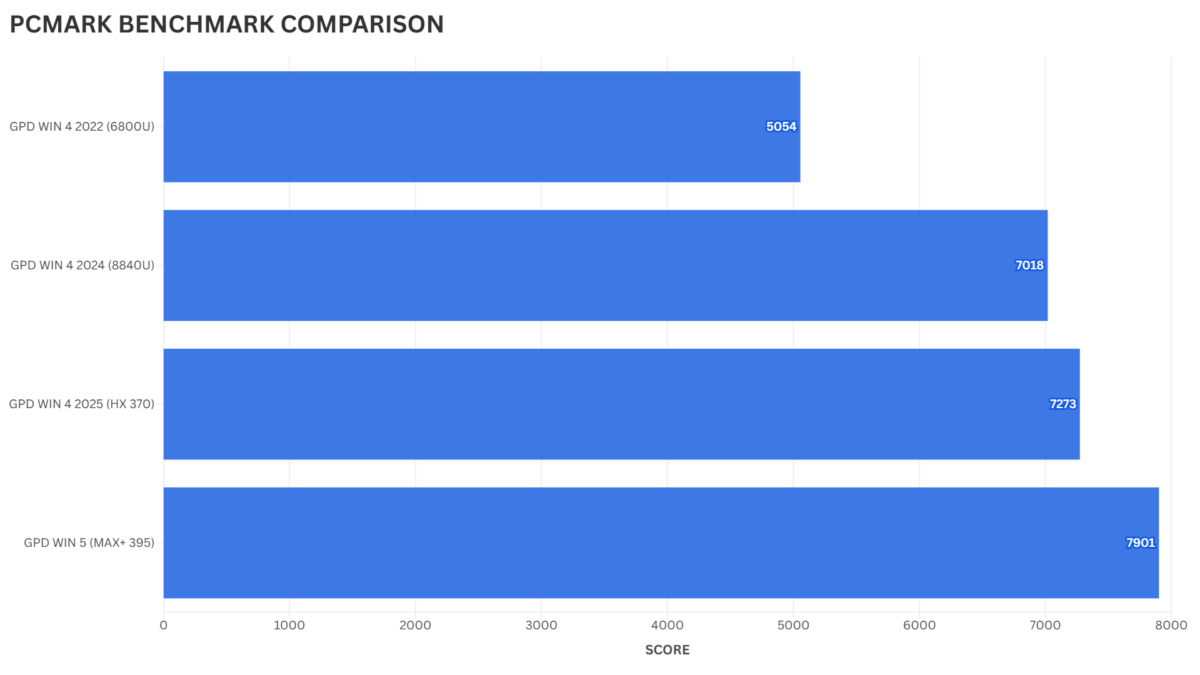
PCMark simulates a range of everyday tasks, from browsing the web to intensive document and media editing. Here, we saw a solid 8% performance gain over the last generation.
3DMark
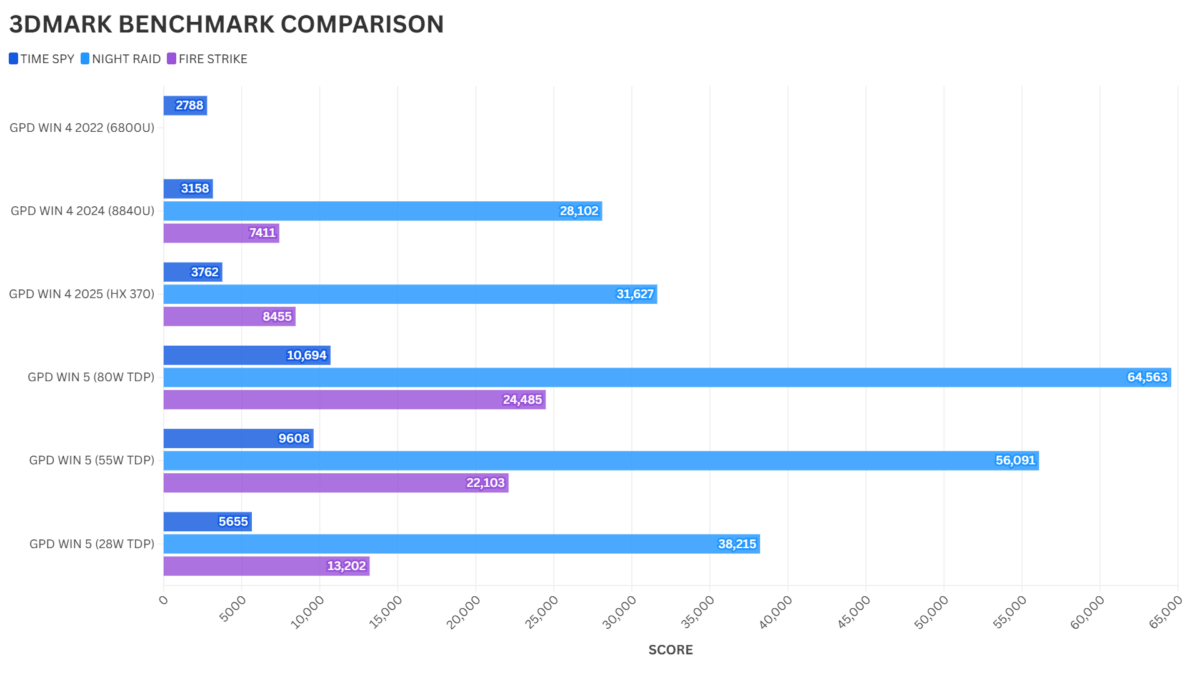
For our 3DMARK testing, we ran Time Spy, Night Raid, and Fire Strike at 28W and 80W. The WIN 5 demonstrates a commanding lead over the previous generation even at just 28W TDP. When the TDP is increased to 80W, the performance advantage becomes astronomical, with increases of 184%, 104%, and 189% across the three tests.
Gaming Benchmarks
In the gaming benchmark section of this GPD WIN 5 review, this portable gaming computer was tested at 28W, 55W, and 80W TDPs. While 80W appears optimal for peak performance, the TDP can be lowered to as little as 7W for less demanding games.
Forza Horizon 5
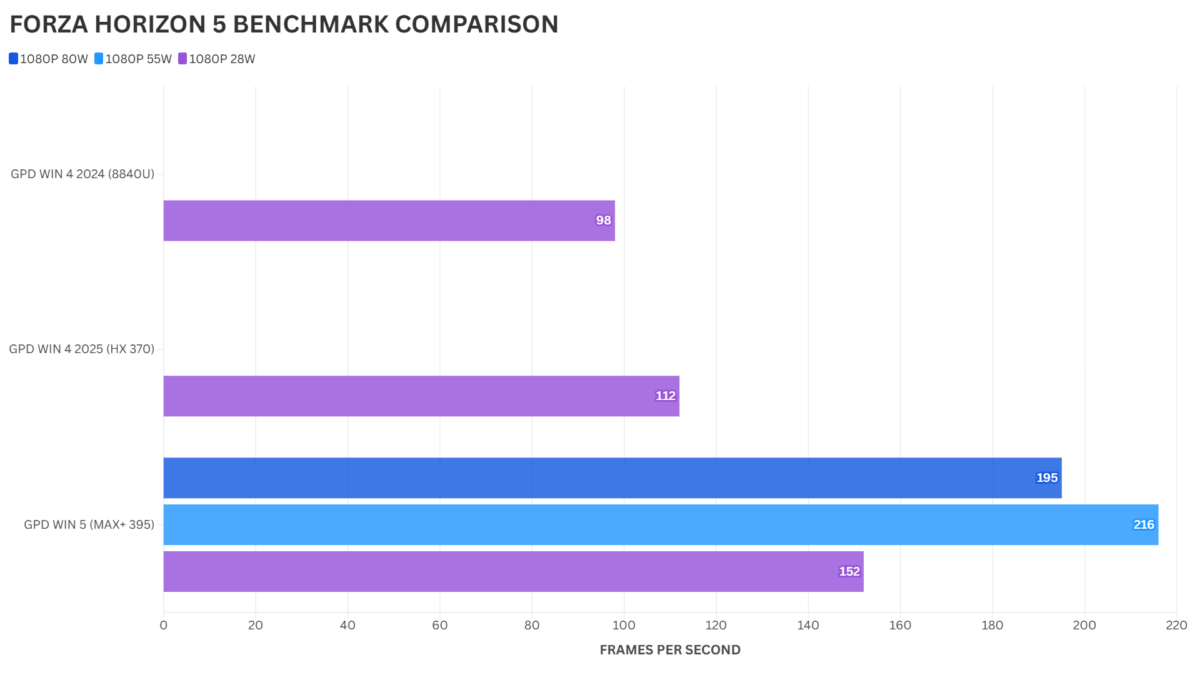
Using Very Low settings for legacy comparison, the Win 5 shows a 35% FPS increase at 28W, which climbs to a 92% increase at 55W. Rest assured, this device can easily handle the game at 1080P Ultra settings.
Cyberpunk 2077
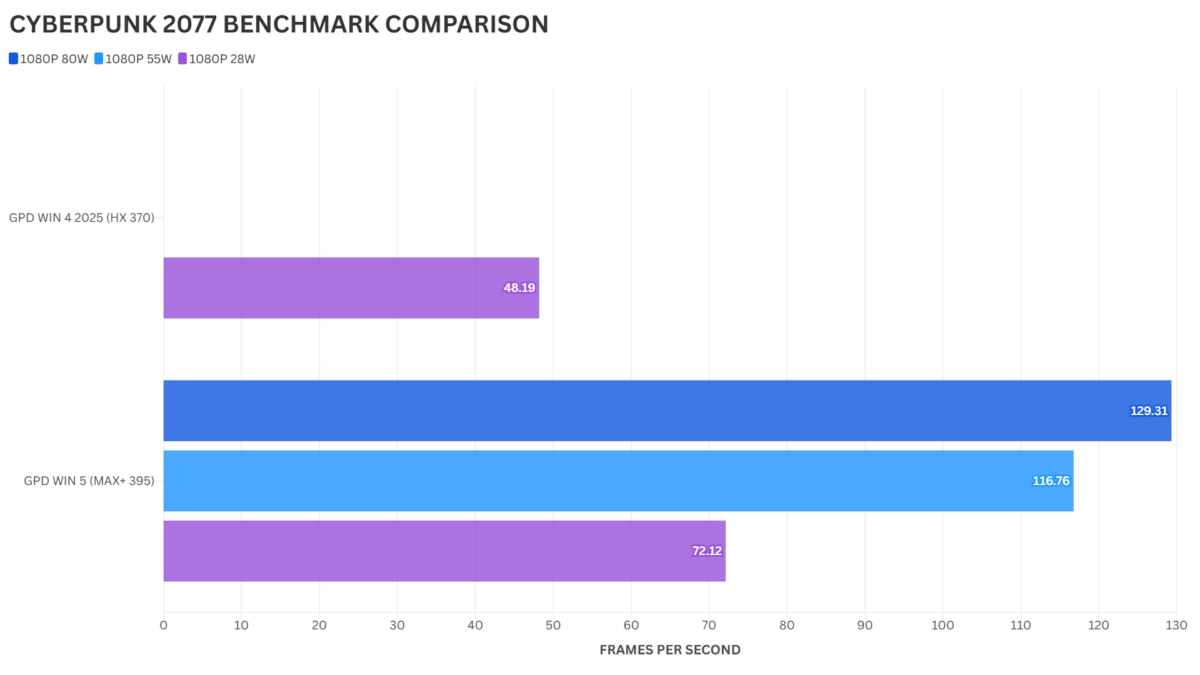
On Low settings for comparison, we recorded a healthy 49% FPS jump at 28W, and an incredible 168% increase at 80W TDP.
Shadow of the Tomb Raider
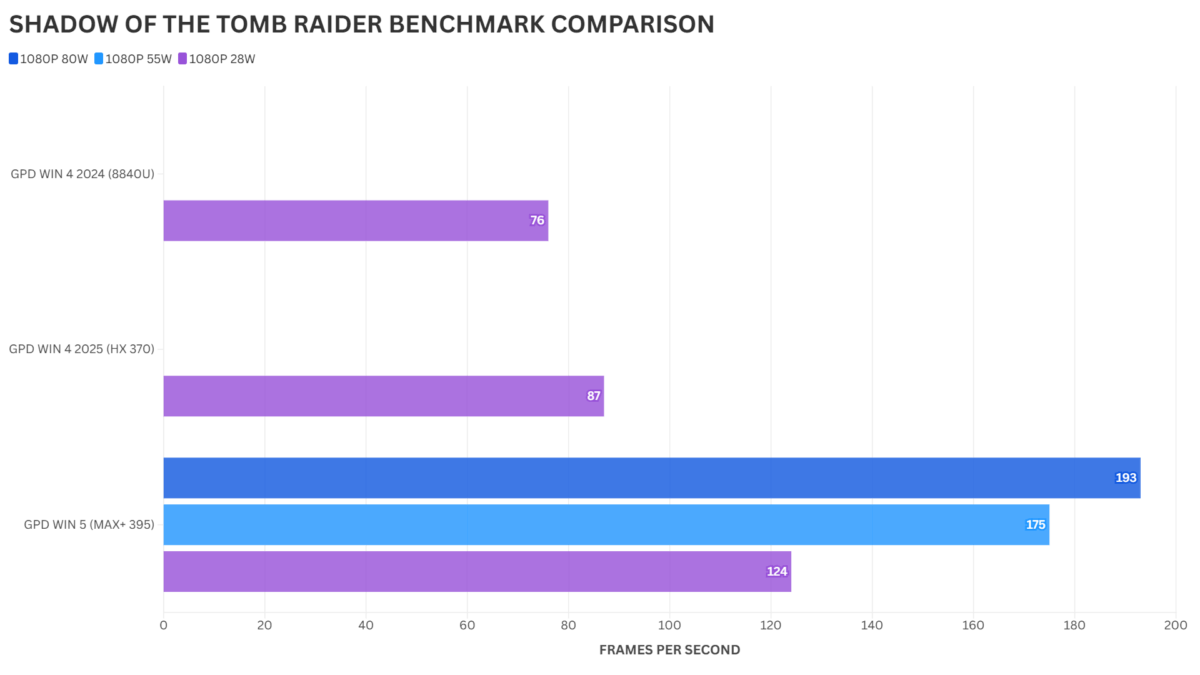
At Very Low settings, the WIN 5 is around 42% faster than the HX 370 at 28W, extending its lead to a 121% FPS increase at 80W TDP.
Benchmark Summary
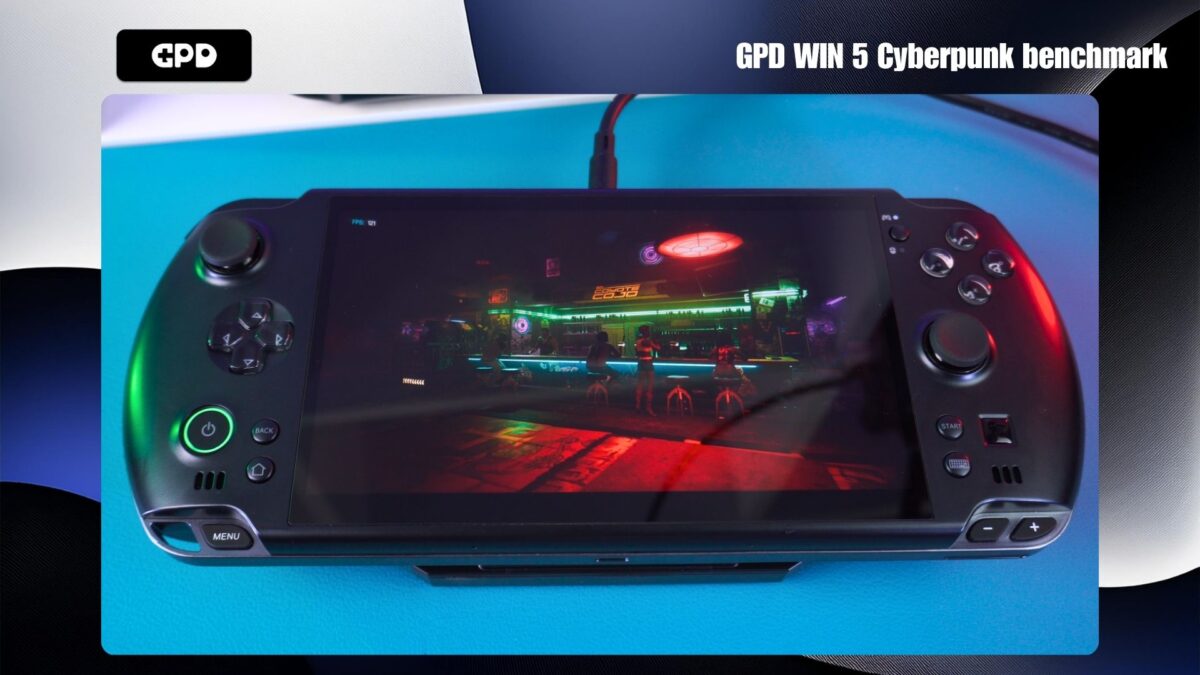
The data from our GPD WIN 5 review benchmarks is compelling. Aside from the single-core performance being on par with the last generation, the MAX+ 395 delivers some truly remarkable results. At a modest 28W TDP, performance is roughly double that of its predecessor. Pushing the TDP to its 80W sweet spot results in performance gains as high as 189%.
Real-World Games Performance
To showcase what this compact gaming PC can truly achieve, we tested several games at 1080P with the goal of hitting either 60 or 120 FPS at the 80W TDP setting.
DOOM Dark Ages
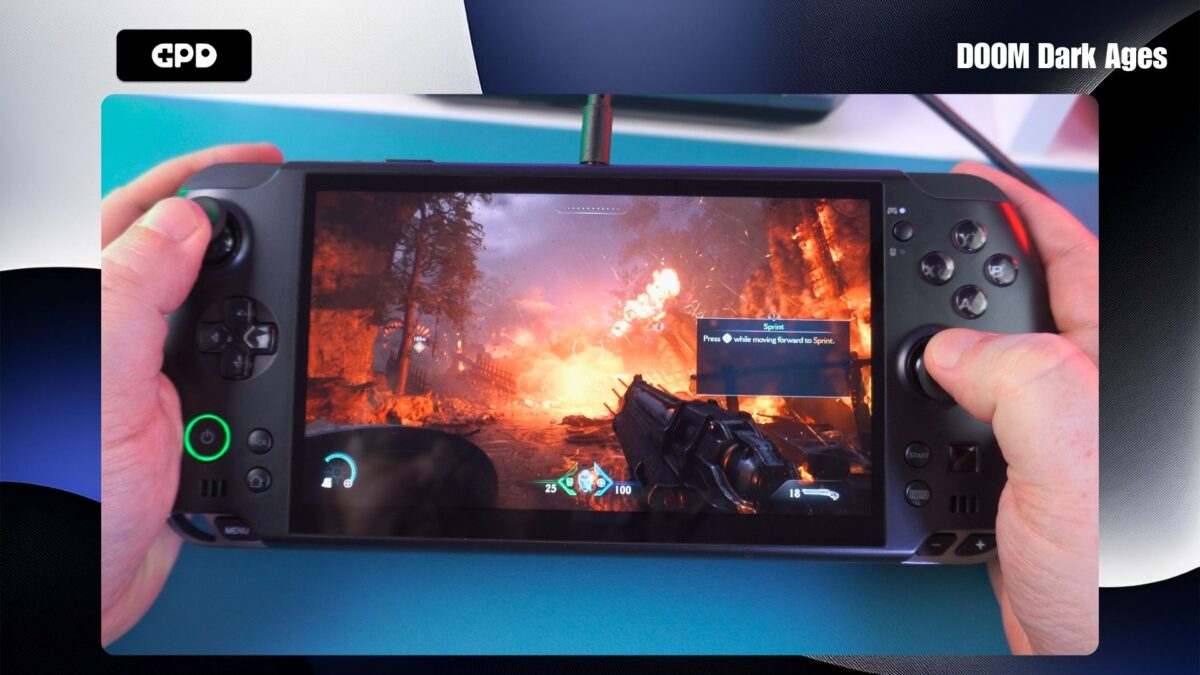
Can be played at 1080P with default Nightmare settings at a fluid 120 FPS.
Tony Hawk’s Pro Skater
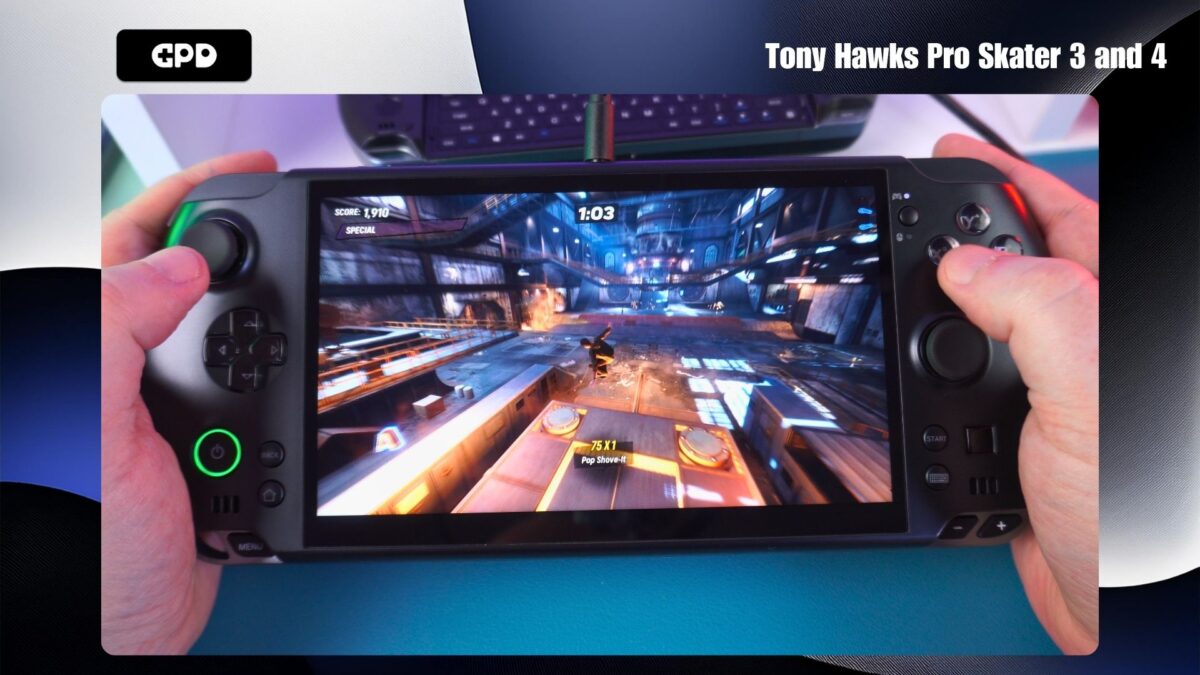
Achieves 60 FPS at 1080P on Maximum settings, or 120 FPS with a mix of Medium and High settings.
Gears of War Remastered
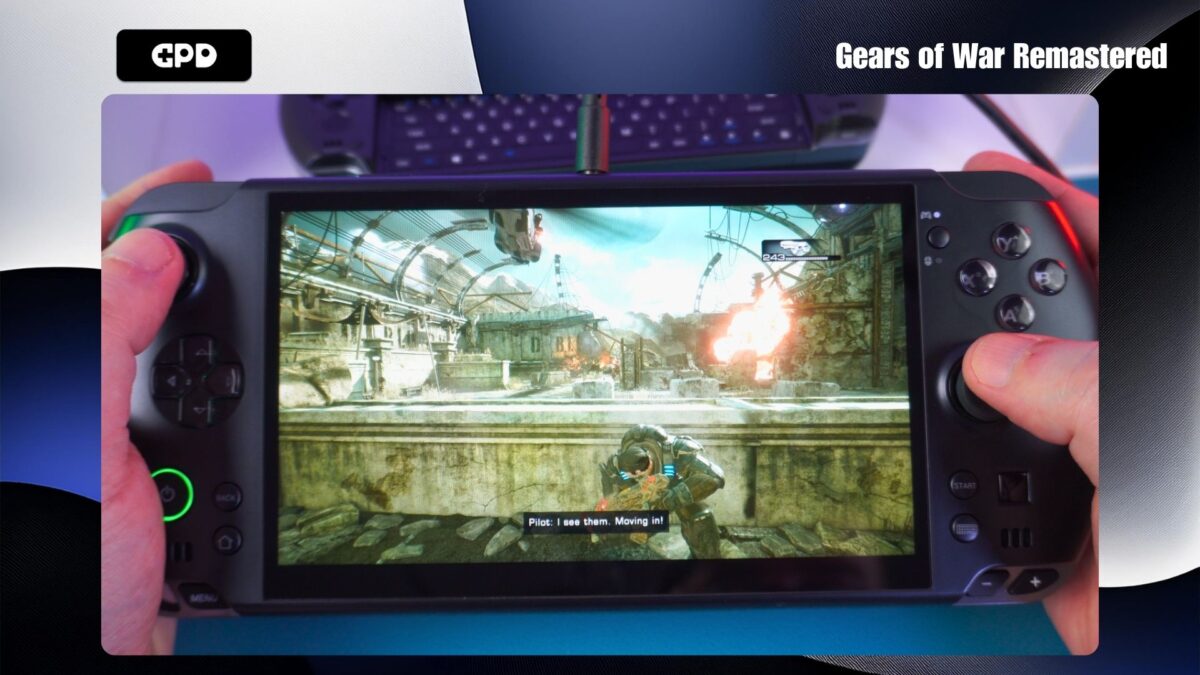
Runs at 60 FPS using 1080P Default Ultra Graphics. Settings can be lowered slightly to target 120Hz.
Atomfall
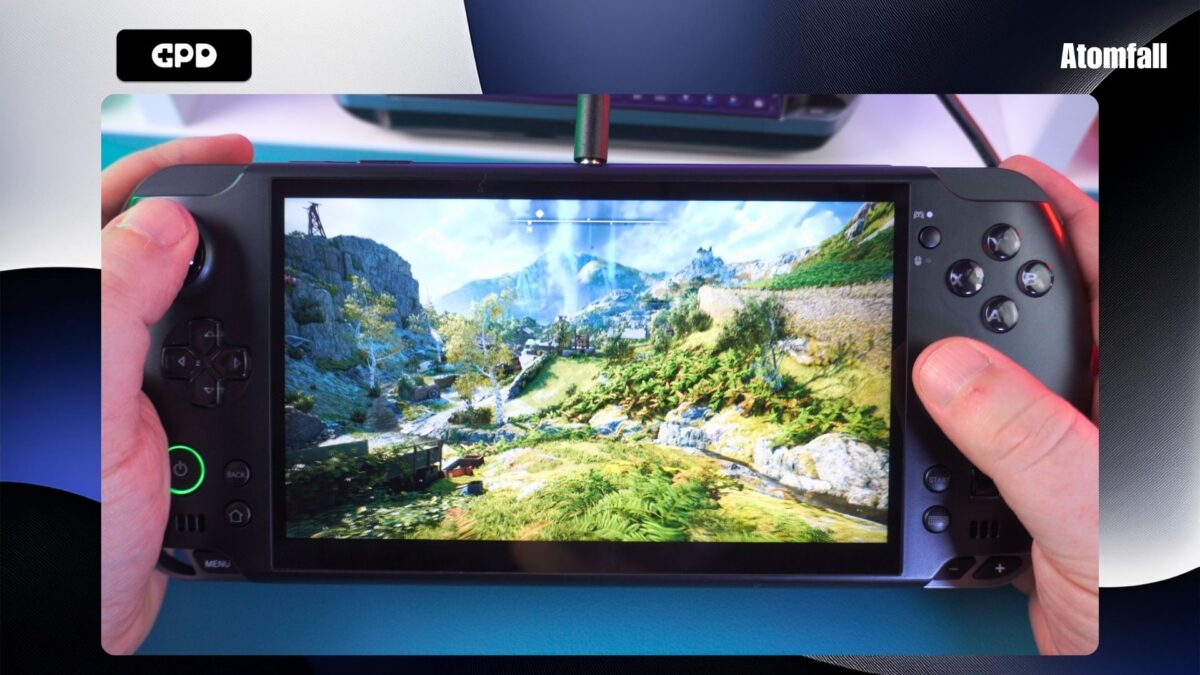
Hits 60 FPS at 1080P on Default Ultra graphics, with the option to lower settings for 120 FPS.
- Other Titles:
- Hollow Knight Silksong: 1080P, full graphics, 120 FPS
- Wheel World: 1080P, full graphics, 120 FPS
- Elder Scrolls IV: Oblivion: 1080P, High settings, 120 FPS
- Wuchang: 1080P, Default High settings, 60 FPS
- No Man’s Sky: 1080P, High or Ultra graphics, 120 FPS
- Palworld: 1080P, Epic graphics settings, 120 FPS
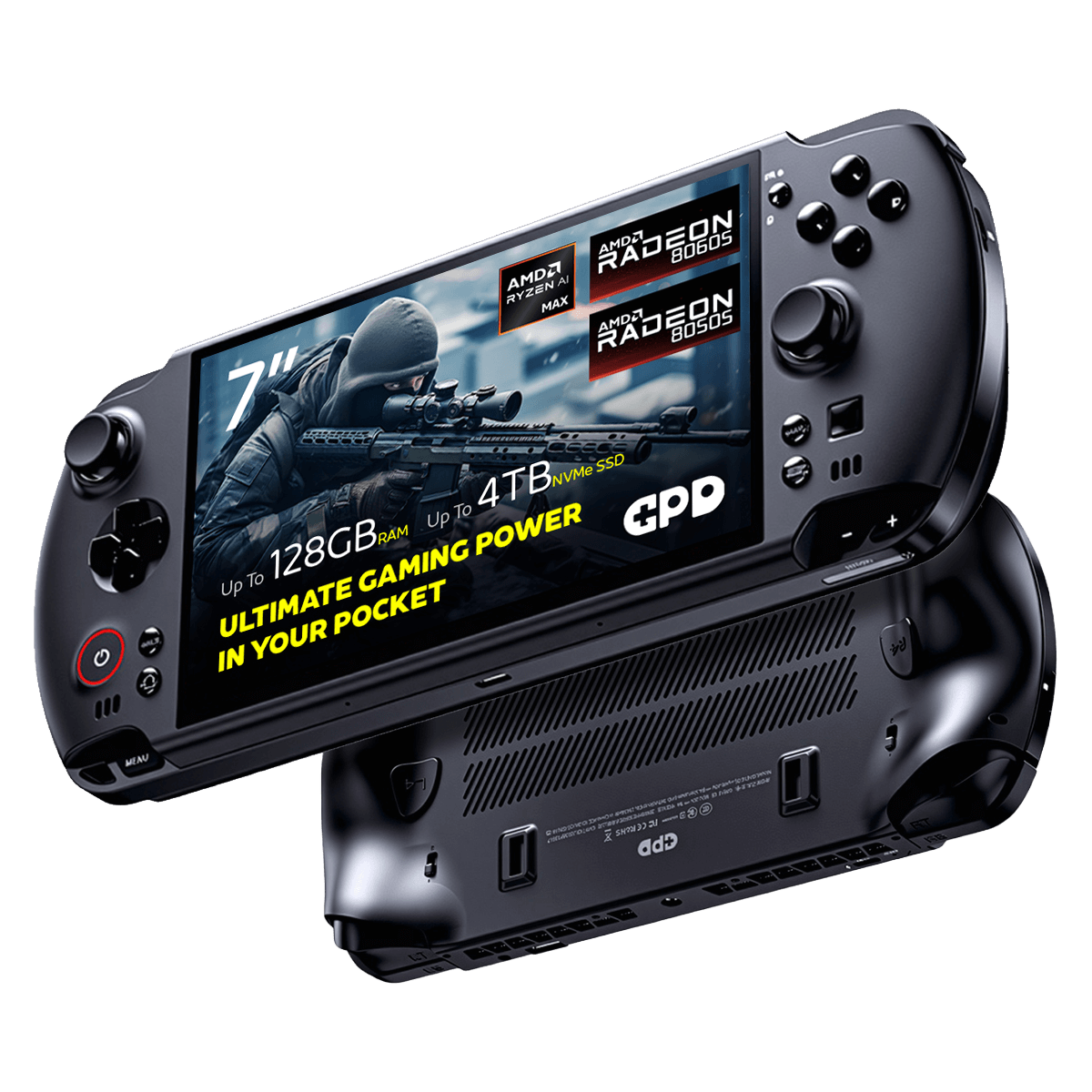
GPD WIN 5 Gaming Handheld PC
Emulation Performance
The previous HX 370 generation was already formidable for emulation, and this handheld gaming computer builds upon that legacy. You can expect flawless performance for everything up to recent console generations. It’s possible to increase rendering resolutions to 1080P or even 4K for external displays, or lower the TDP to conserve battery.
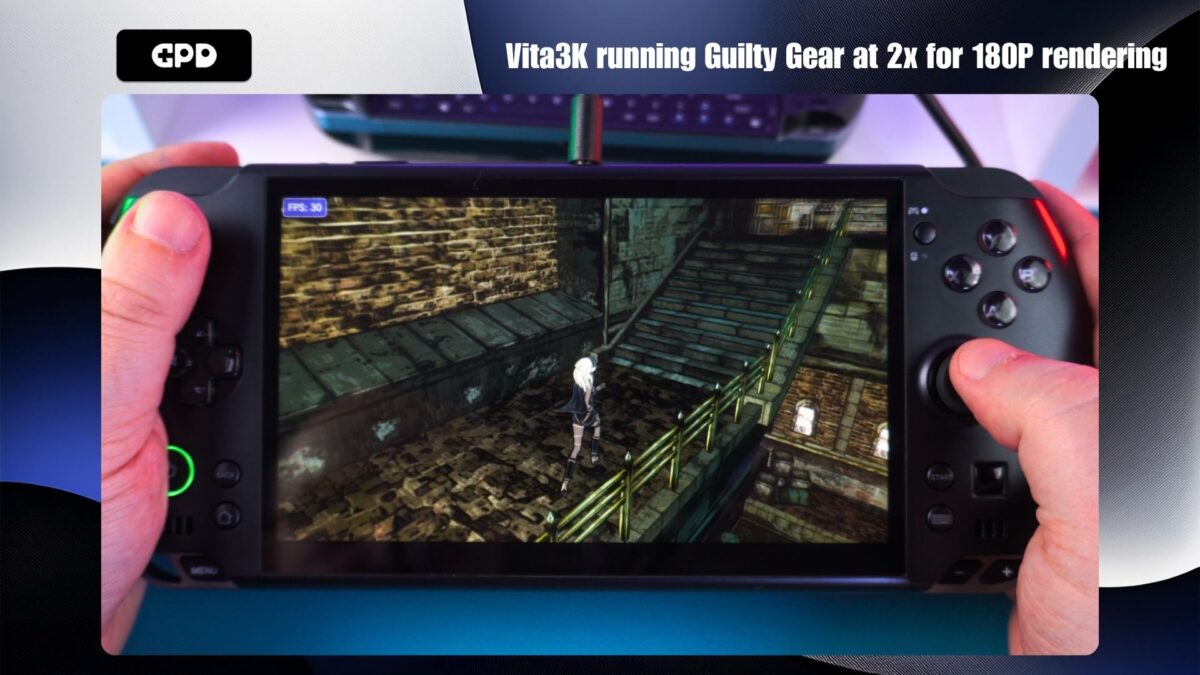
For this GPD WIN 5 review, we focused on a couple of the more challenging emulators to gauge the capabilities of this mobile gaming PC.
Vita3K
The Vita emulator runs beautifully at 2x rendering resolution with graphical enhancements. Any game compatible with the emulator should provide an excellent experience.
Eden
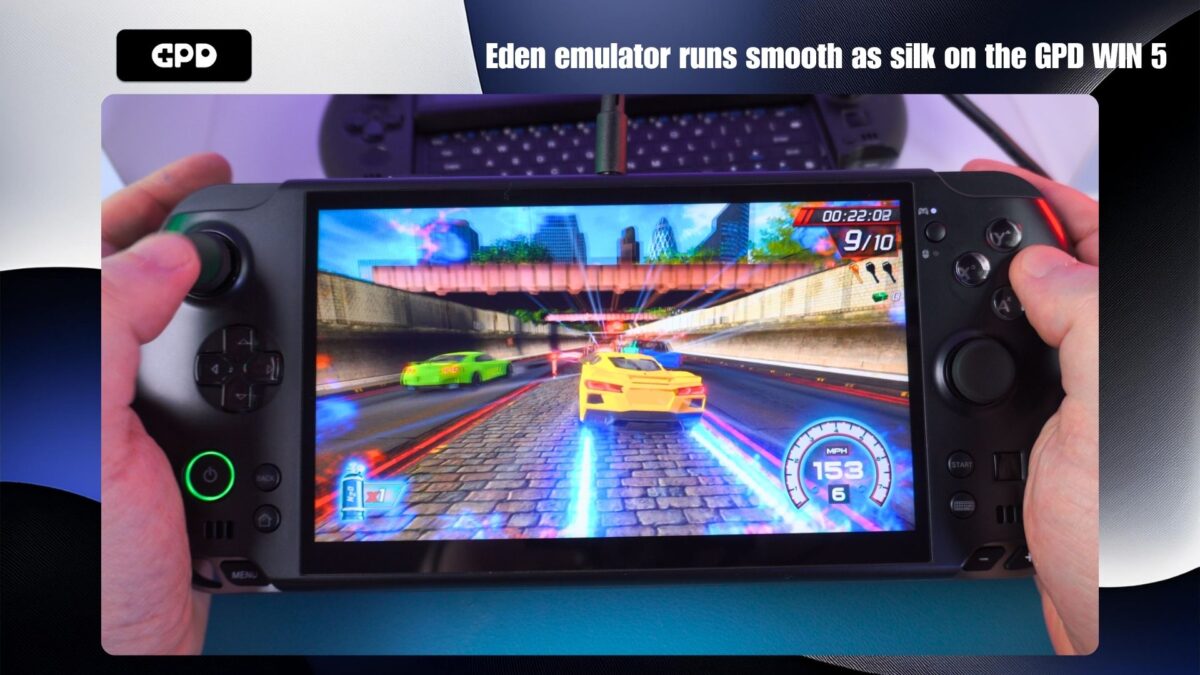
We encountered no performance issues playing our test games in Docked high mode with Eden. Certain first-party titles ran with perfect smoothness.
Xbox 360
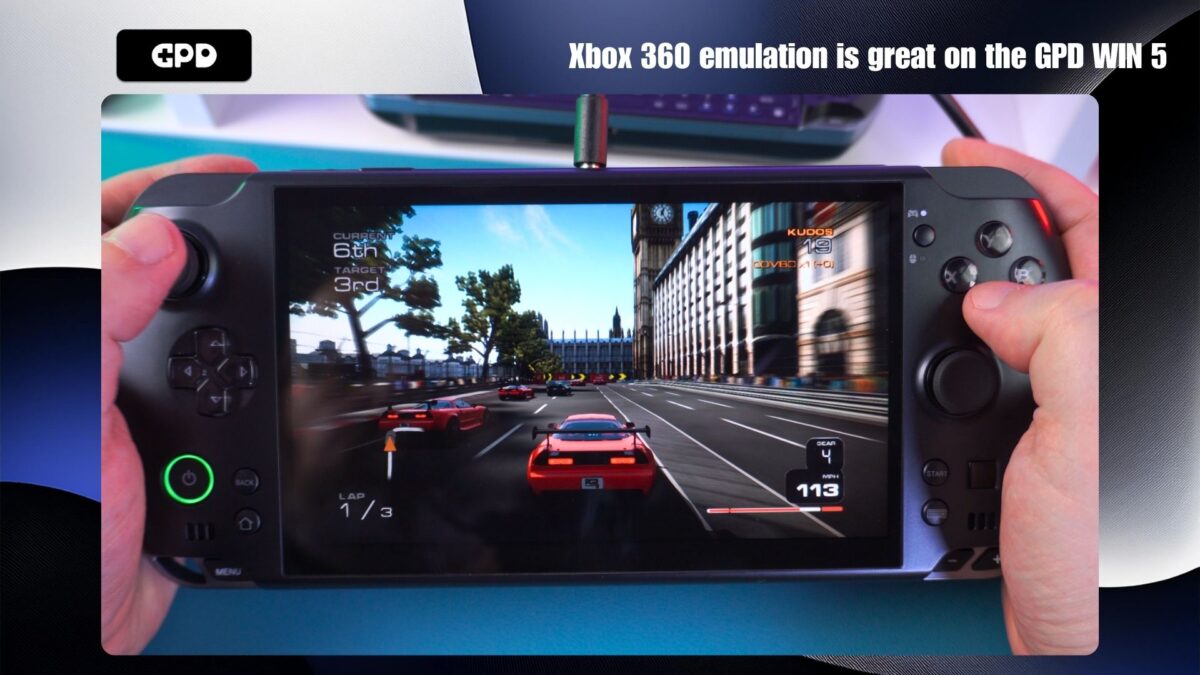
The GPD WIN 5 is finally a handheld that can handle Xbox 360 emulation very well. For compatible titles, the experience is excellent, with stable frame rates.
Final Thoughts
As we conclude our GPD WIN 5 review, we are left thoroughly impressed. As the first MAX+ 395 handheld we’ve tested, it sets an incredibly high bar.
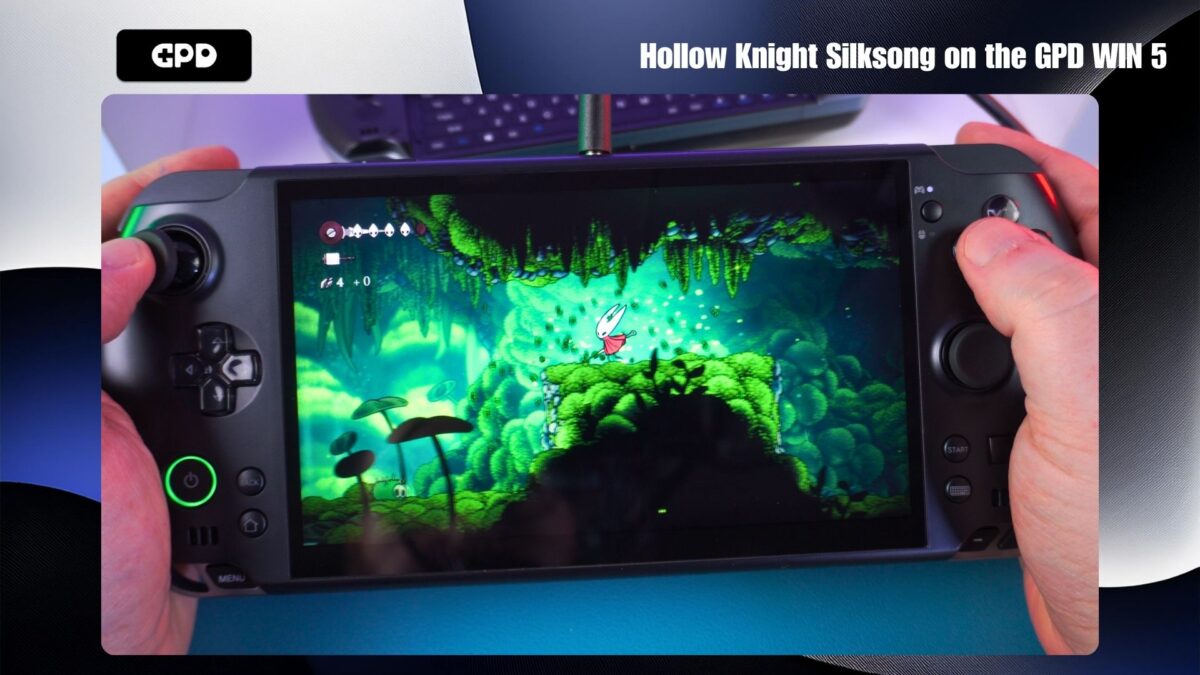
The leap in performance from the 8840U to the HX 370 was respectable, but the jump from the HX 370 to the 395 is monumental, offering more than double the performance at just 28W. At 80W, its performance surpasses that of the AMD Radeon 7600M XT in the GPD G1 eGPU. This poses a compelling question: why carry a GPD WIN 4 and a G1 when the WIN 5 alone delivers even better performance in a single portable gaming computer?
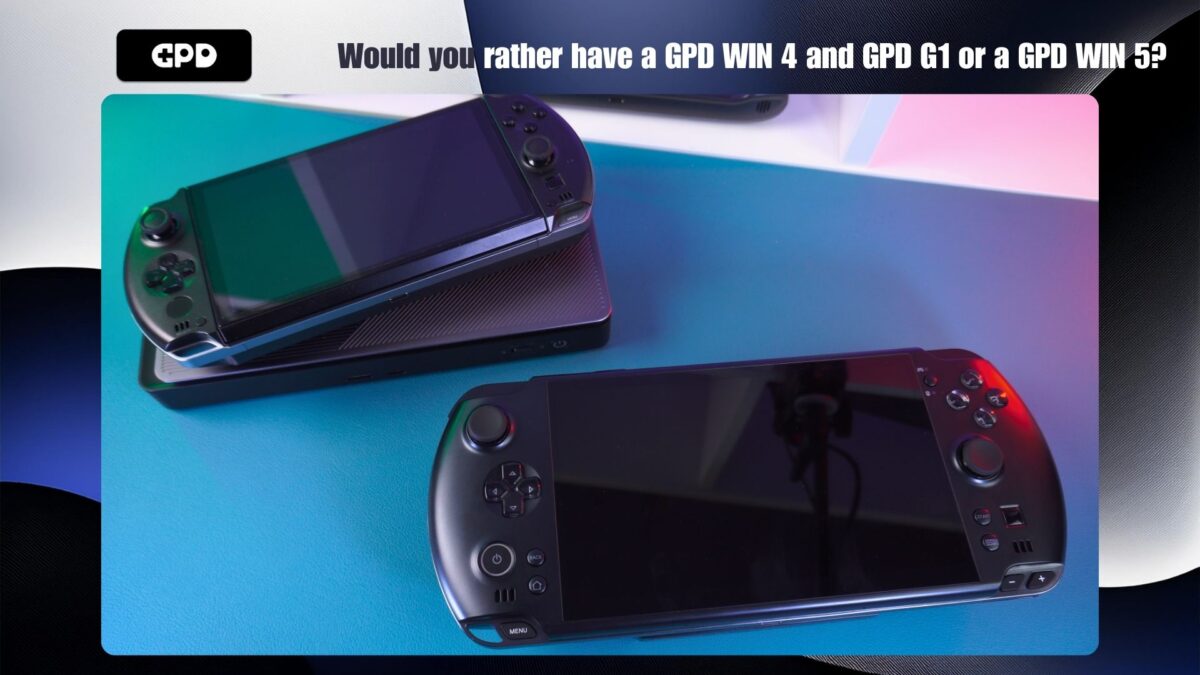
Regarding common concerns: the power button’s location was never an issue during gameplay. I did not press it accidentally once while playing, though I did trigger it once when picking up the device to attach the battery.
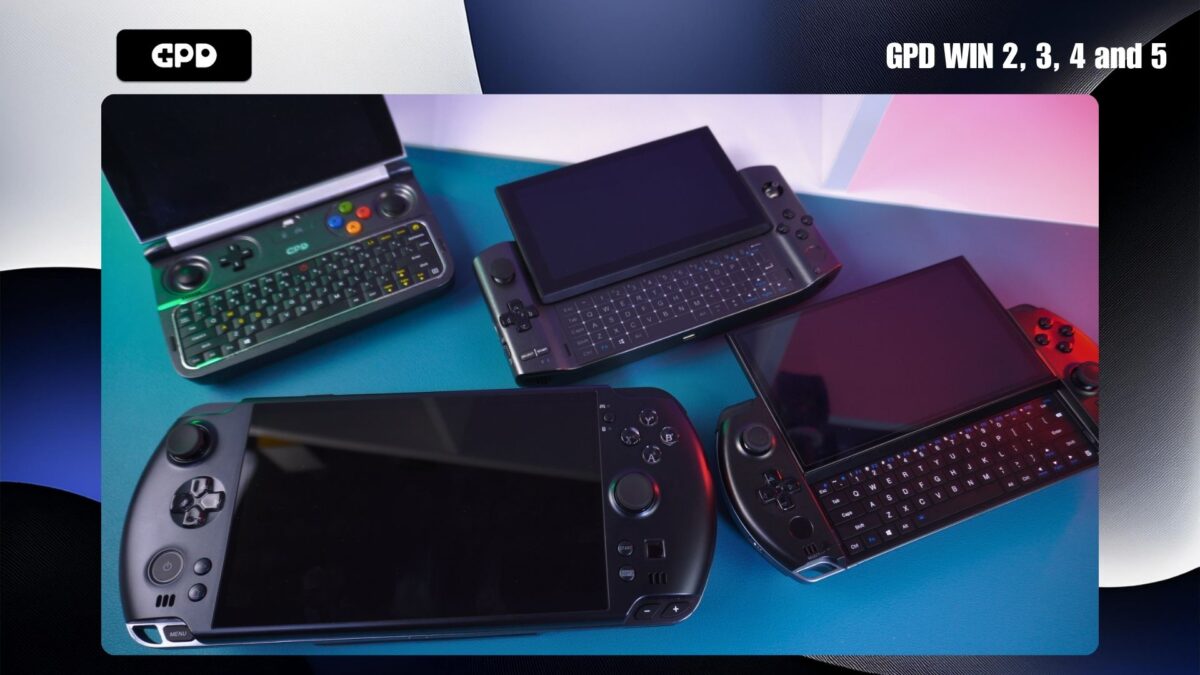
The absence of a keyboard is a point of contention. The GPD WIN series has a history of including keyboards, making its omission here disappointing for some. However, many popular handhelds, like the Steam Deck, also lack one. While convenient for quick messages or shortcuts, we completed this entire review without needing a physical keyboard.
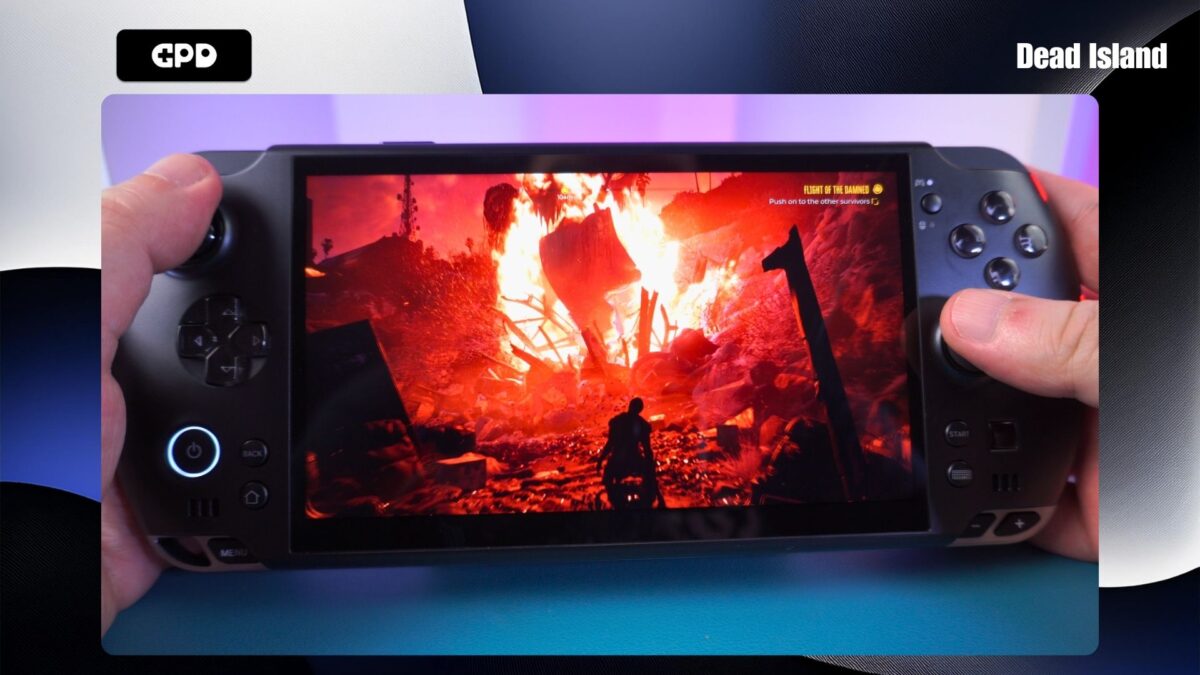
In summary, this GPD WIN 5 review concludes that the device is a phenomenal piece of engineering. It packs the punch of a capable desktop PC, offers flexible power solutions, and introduces the exciting new mini SSD format.
If you are seeking the pinnacle of performance in a handheld gaming PC, the GPD WIN 5 is, for the moment, the definitive choice to consider.
GPD WIN 5 Review
-
Design
-
Build Quality
-
Display
-
Performance
-
Features
Summary
Setting a new standard for portable power, the GPD WIN 5 pairs its monstrous AMD Ryzen AI Max+ 395 APU with up to 128GB RAM and an innovative modular battery for a no-compromise handheld gaming and computing experience
Pros
- High performance CPU and GPU performance with the Ryzen AI Max+ 395 and Radeon 8060S
- Up to 128MB RAM supported
- Modular battery system means easy replacing of batteries
- Mini SSD (MSSD) support
Cons
- No built-in keyboard
User Review
( votes)4 comments
Leave a Reply
Your email address will not be published. Required fields are marked *

Pros: faster than hx 370
Cons: battery fries quicker
Crazily expensive
No USB c charge/no power Bank pd capability
No oled no VRR
Small screen
Heat at the back blows to your fingertips
Many more
Battery life has not been fully tested yet but we have seen upwards of two hours at 30W TDP which is far better than the HX 370 devices. Of course using higher W will reduce the battery life. Prices have not yet been announced so we can not comment on that.
-even at 15w is twice as fast as HX370
-battery can actually outperform every other console since as i sait at wattage above 13 outperforms the competition
-yes it will be really expensive but actually it seems for the chipset its using it will be one of the “cheapest” in the market
-you are wrong the top usb c is full usb 4 AND has a 100w PD. check the offical spects at trhe website
-there are no oleds with VRR at that size, thats why you dont see them anywhere, VRR is better than any oled, both thing would be better i know.
-7″ is not bat but for me the ideal size is 8″
-Heat DOESNT blow at you fingers LOL that is the AIR INTAKE the hot air comes out of the top
-tell us the other “many more” since all your points are basically wrong or missinformed
It does support VRR and AMD FreeSync Premium. Not sure where you got the “No VRR” from.